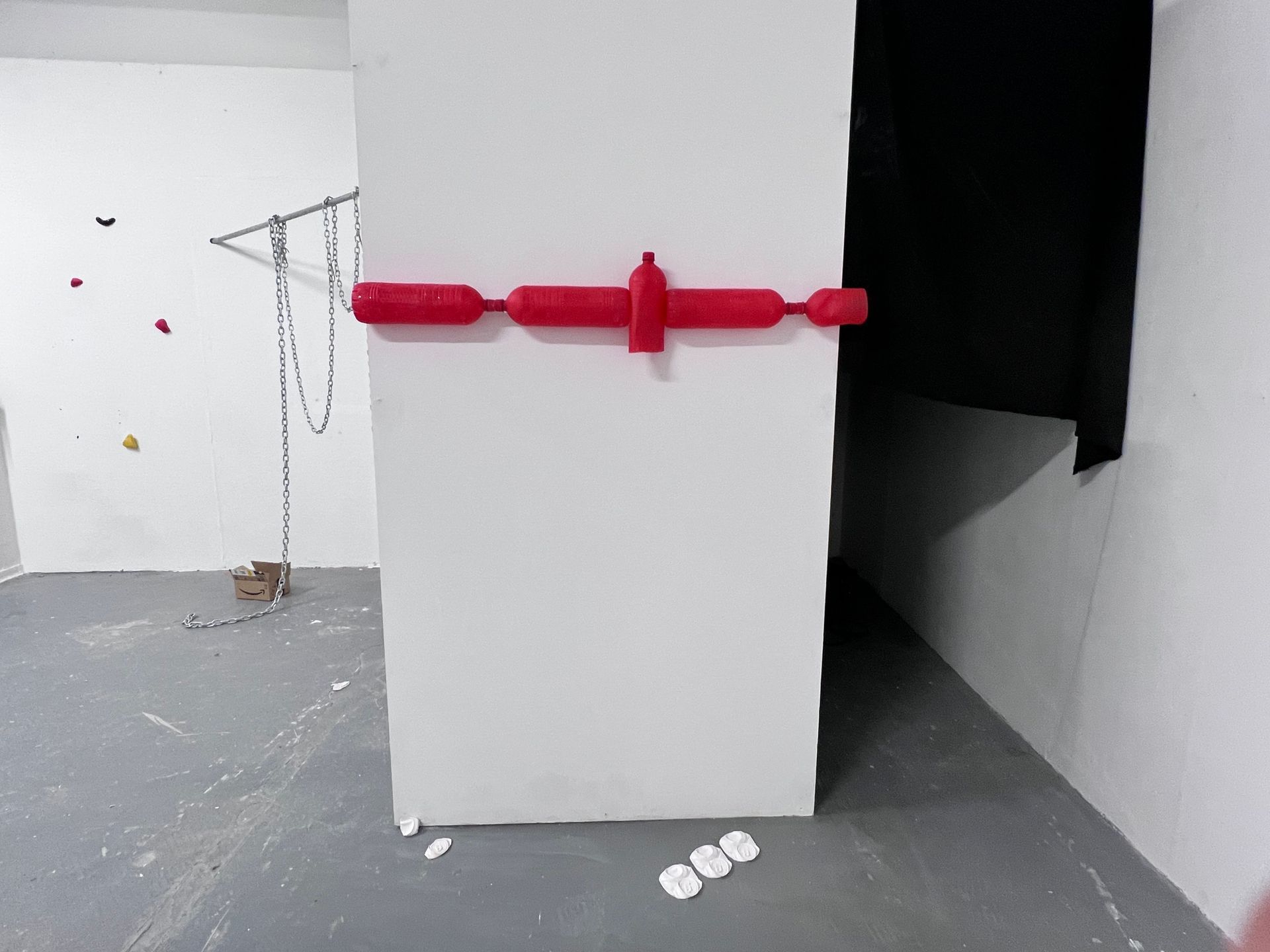
Untitled, 2022, Found objects, acrylic paint, plaster
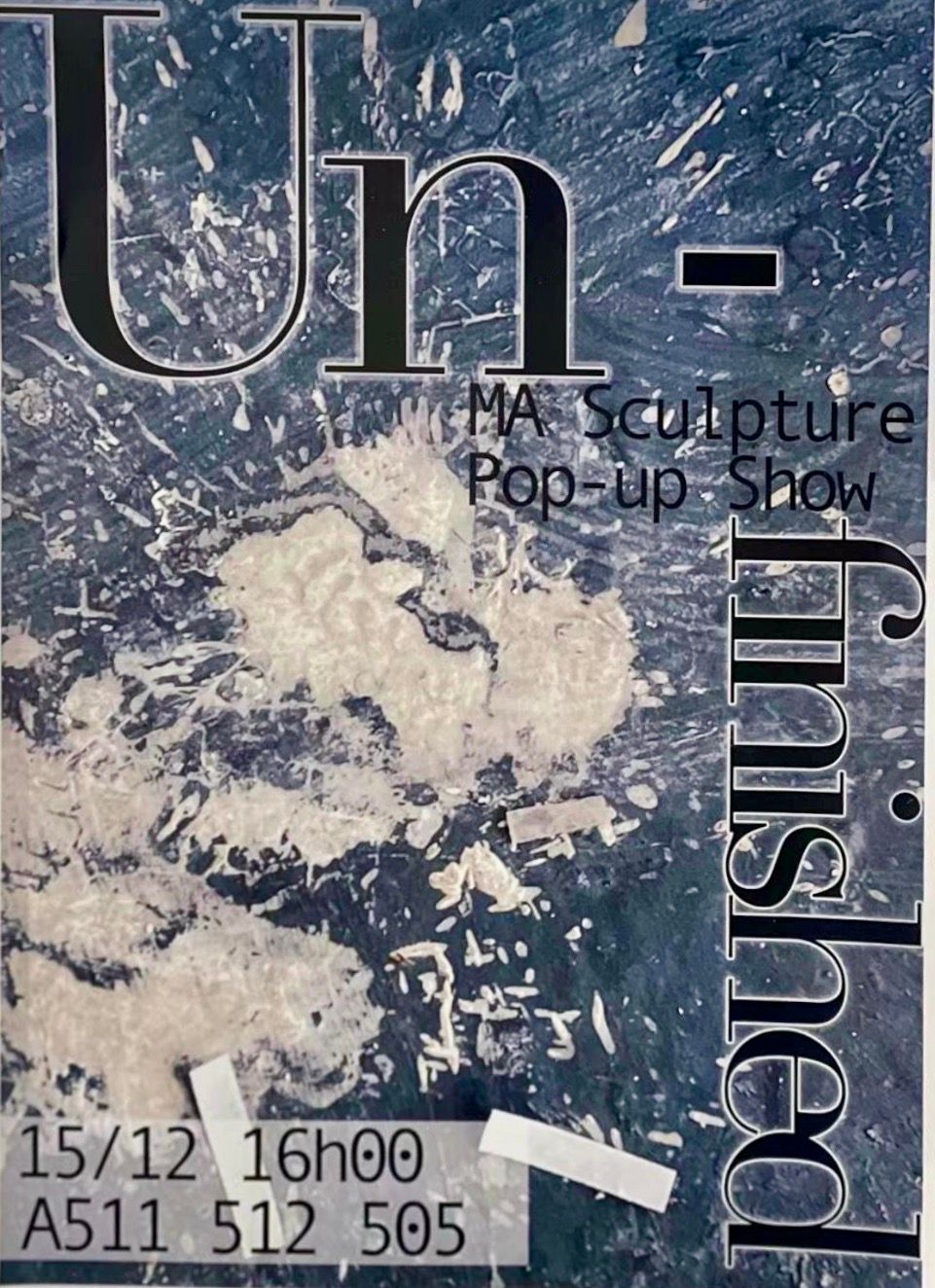
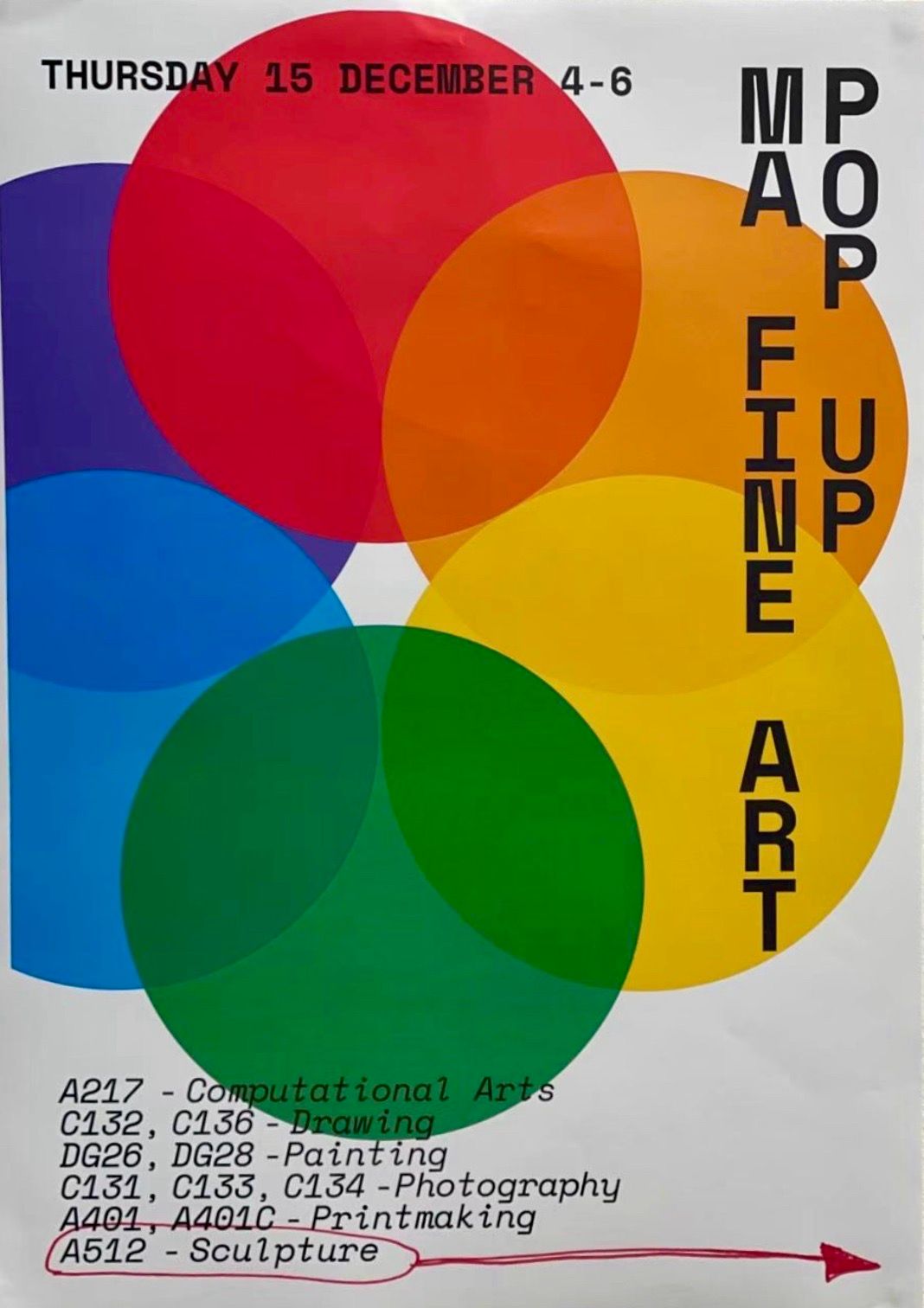
Pop - up Show posters, December 2022
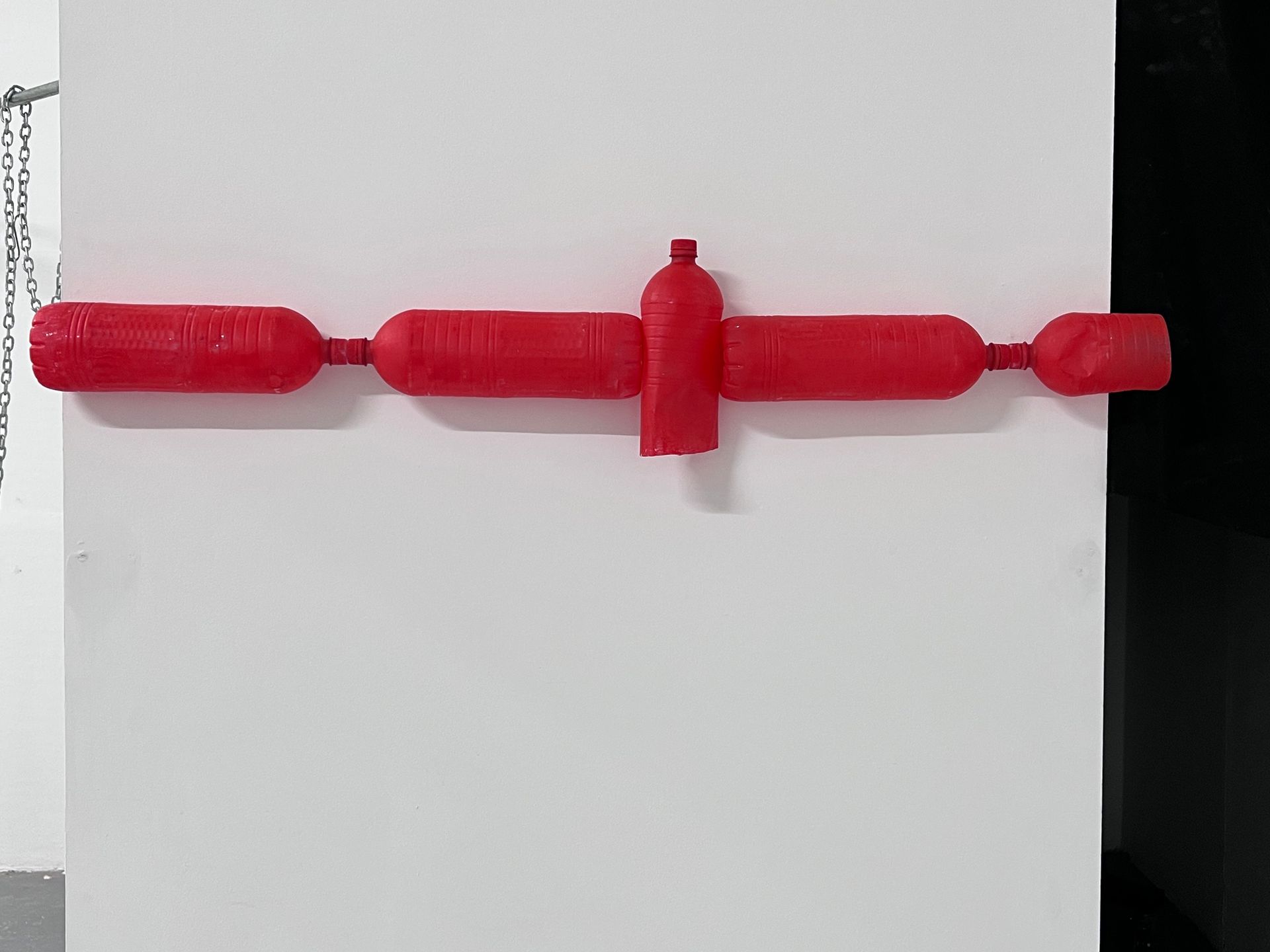
Untitled, 2022, Found objects, acrylic paint, plaster (detail)
The objective of this work is to investigate the phenomenon of inanimate objects retaining a vestige of their previous function and cultural significance, and how this impacts our perception of found objects, ultimately leading to an enhancement of their ecological value.
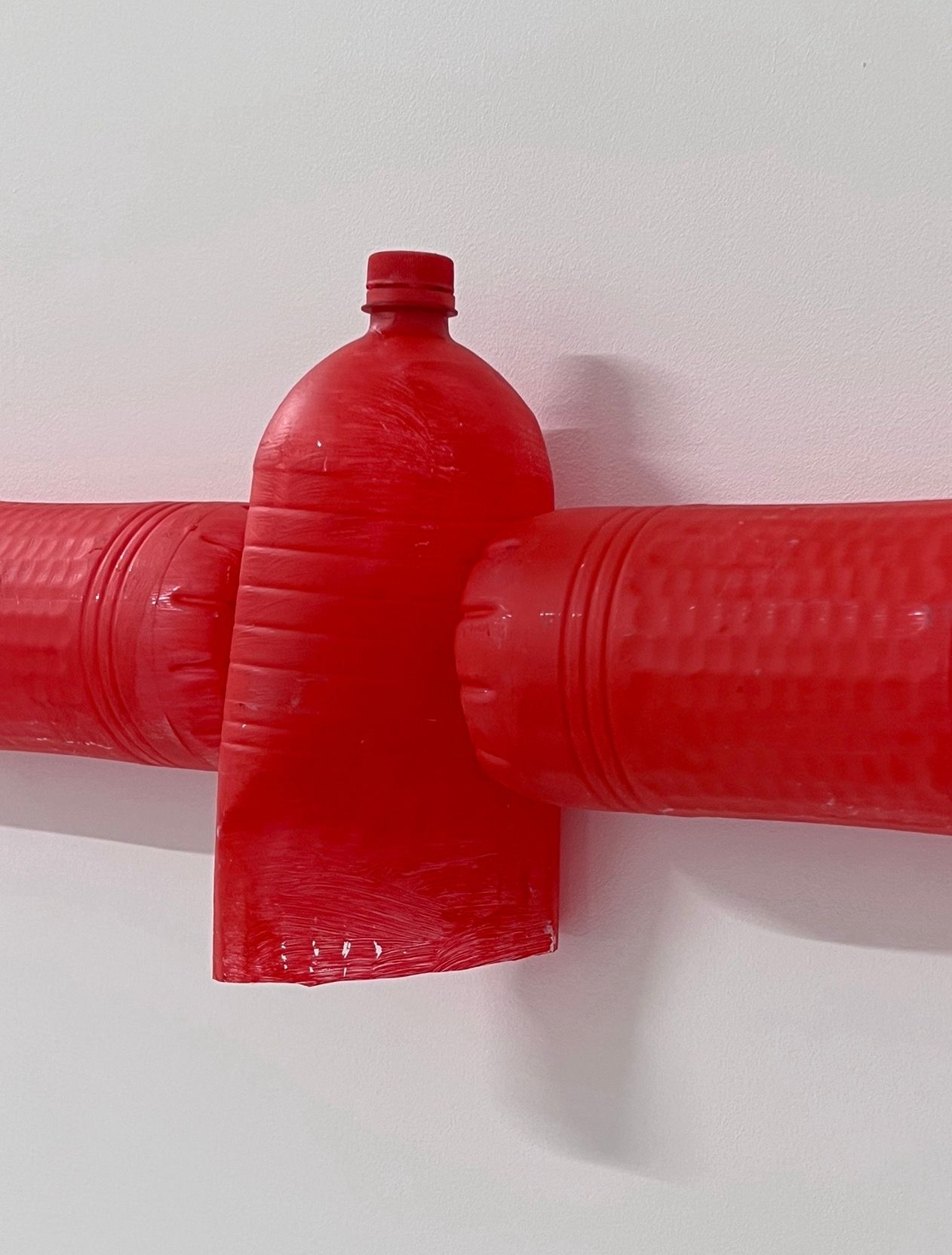
Untitled, 2022, Found objects, acrylic paint, plaster (detail)
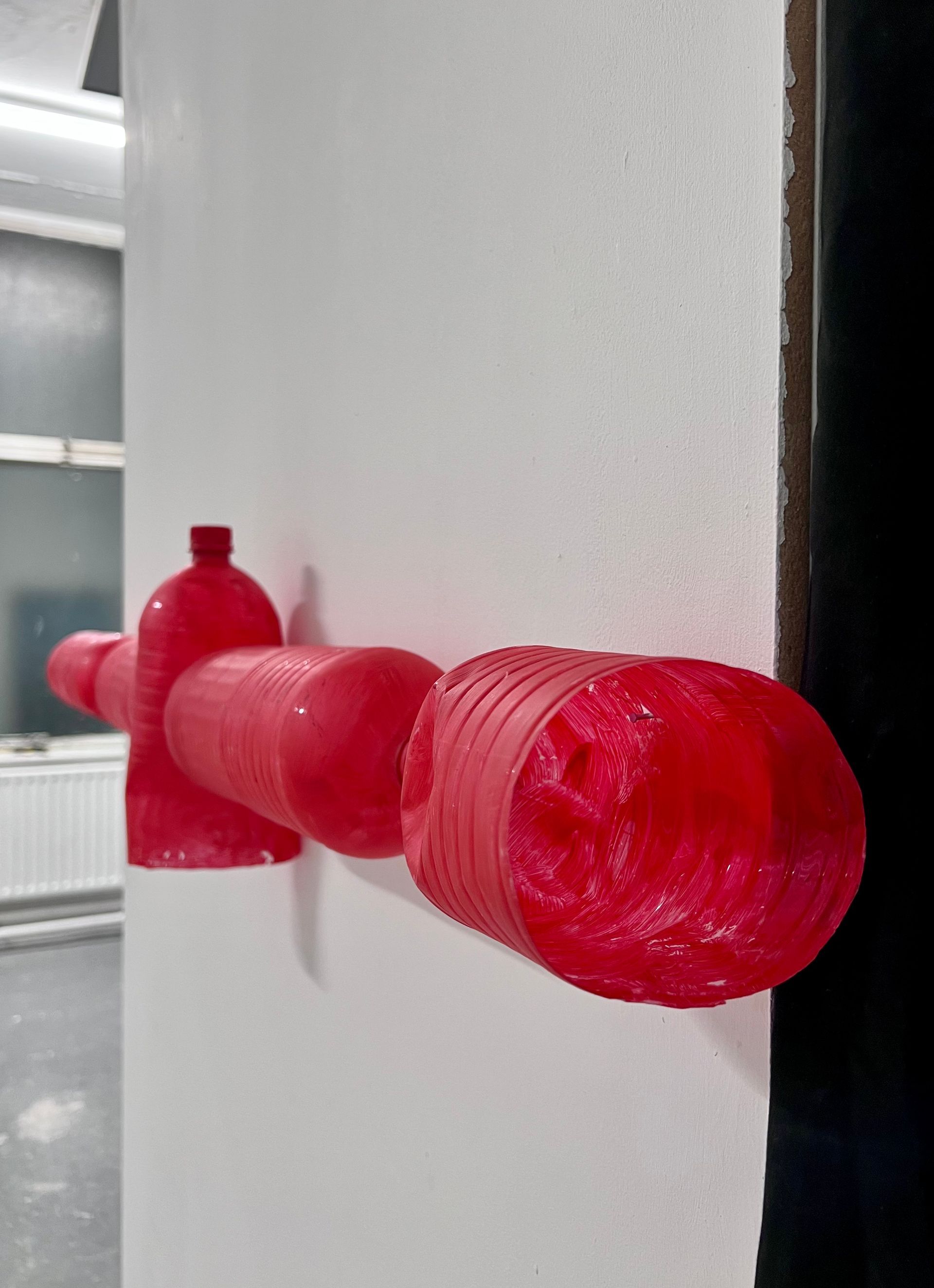
Untitled, 2022, Found objects, acrylic paint, plaster (detail)
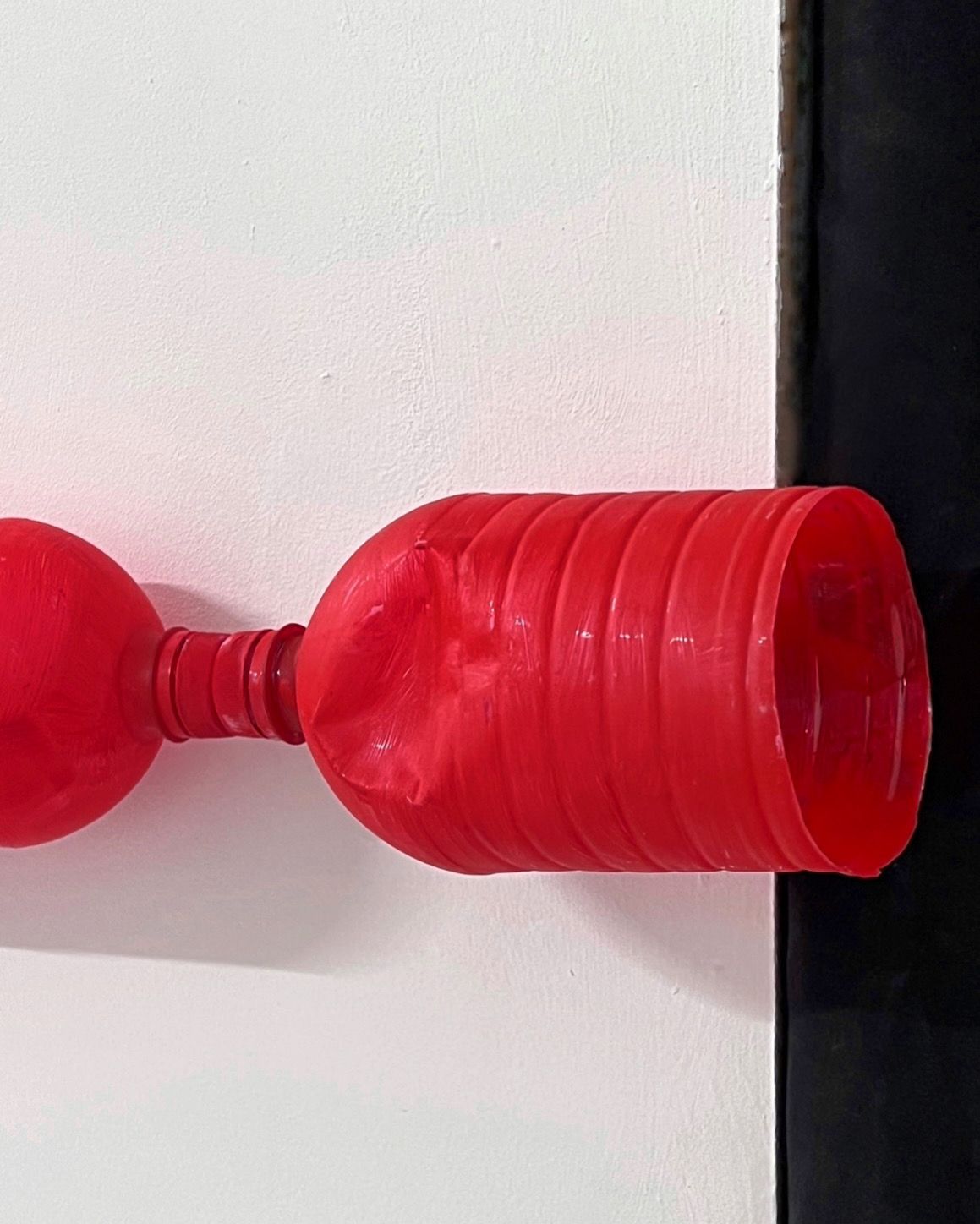
Untitled, 2022, Found objects, acrylic paint, plaster (detail)
In this work, I aim to convey the idea that every individual action has the potential to trigger a chain reaction within the ecosystem in which we exist. Furthermore, I intend to convey the concept that our ecosystem is fragile and susceptible to collapse at any given moment. My intention is to make the audience feel a sense of discomfort as they contemplate the potential consequences of their actions within the context of this delicate ecosystem.
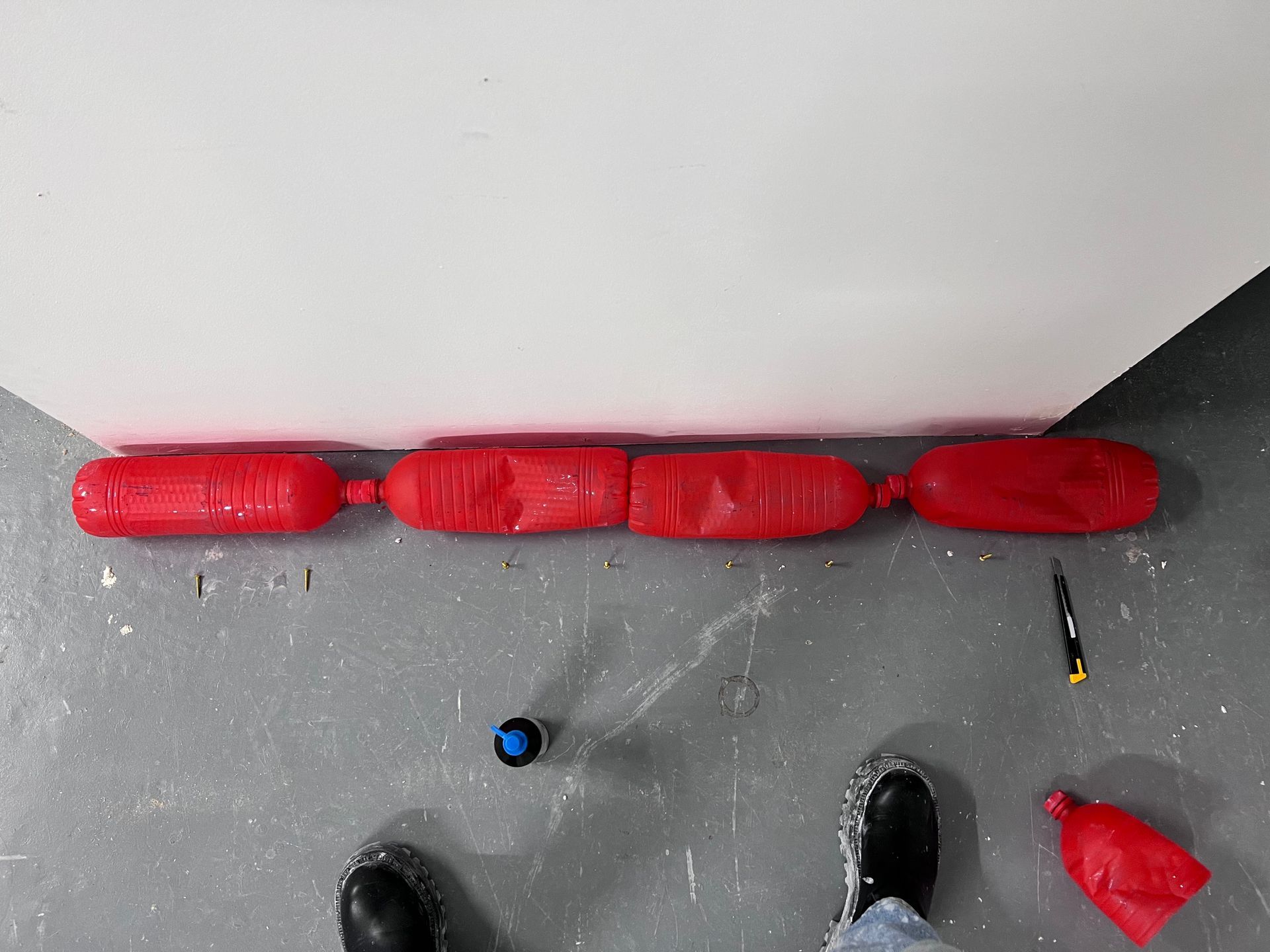
Untitled, 2022, Found objects, acrylic paint, plaster (making of)
Constructivism art is characterised by its use of abstract forms and its emphasis on the process of construction. This art form emerged in Russia in the early 20th century and was heavily influenced by the revolutionary political and social changes of the time. I grew up with this strong influence. Constructivism artists sought to use art as a means of communicating political and social ideas and to inspire change in society.
Constructivism art is a form of art that captivates the viewer with its use of bright colours, geometric shapes, and bold lettering. These elements are combined in a way that evokes strong emotional reactions and a sense of dynamic movement.
The bottles used in this work were sourced from my household waste and subsequently recycled. I chose to colour them in a vibrant and striking shade of red, akin to that of children's toys, in order to enhance their visual appeal and make them more impactful.
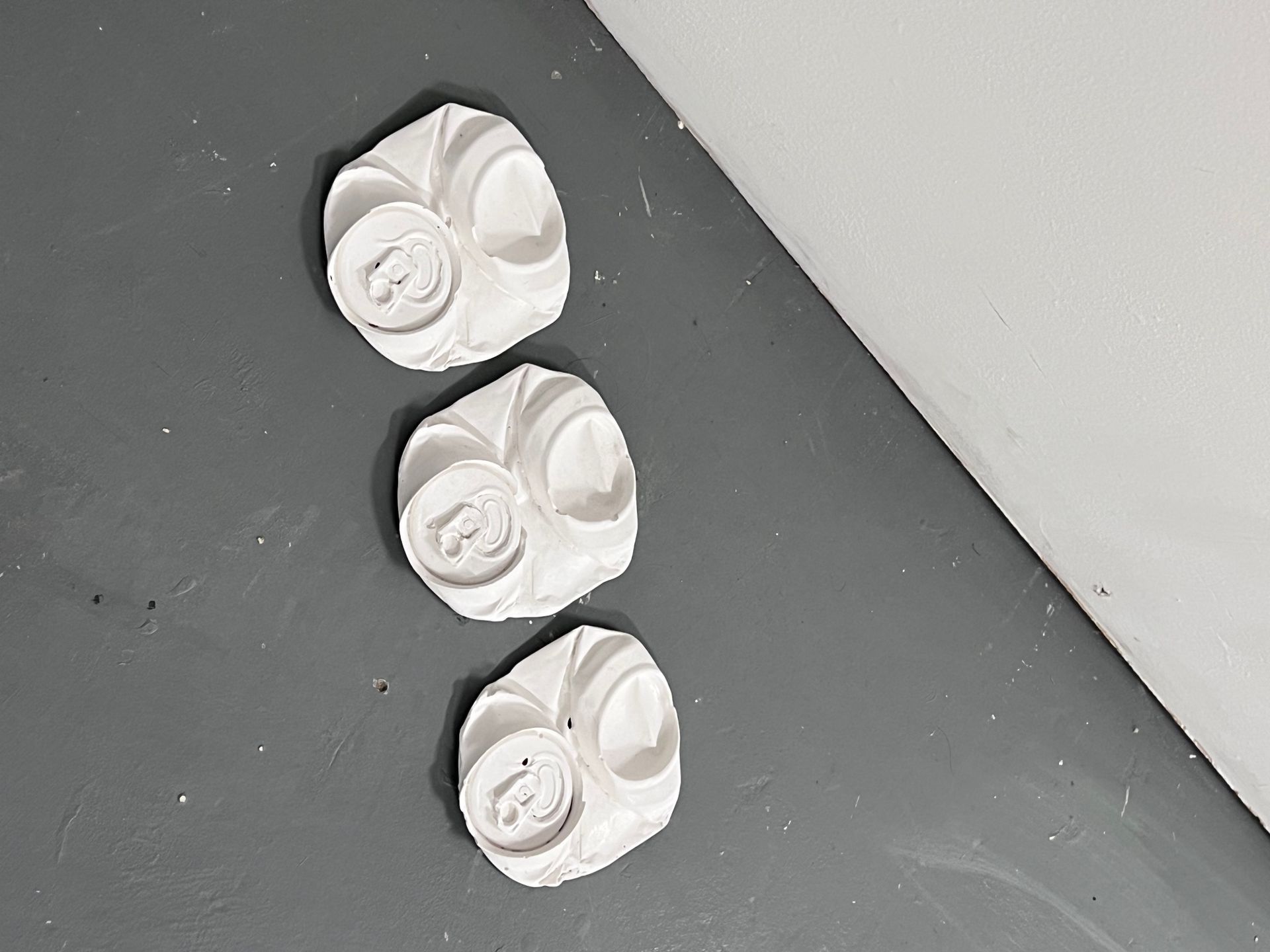
Untitled, 2022, Found objects, acrylic paint, plaster (detail)
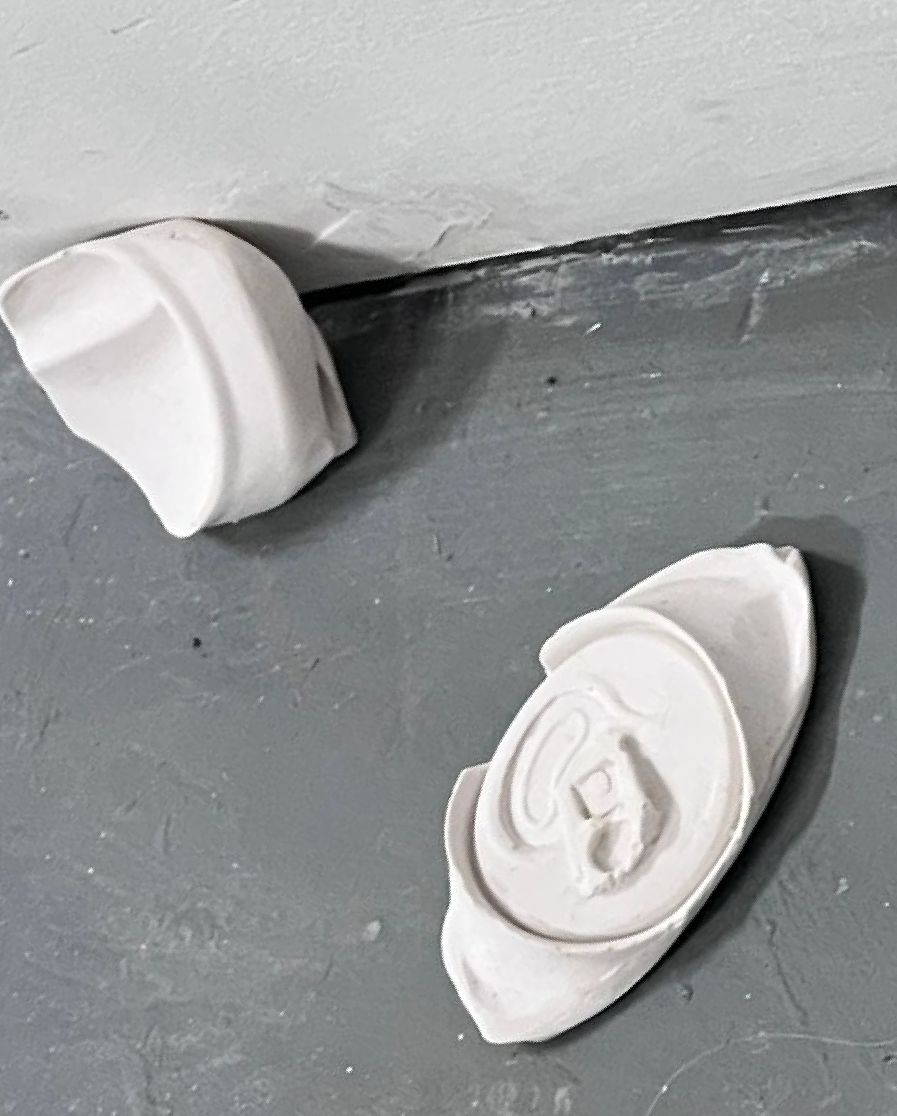
Untitled, 2022, Found objects, acrylic paint, plaster (detail)
Crit's exhibition view, December 2022: and then they were something else; the limbo; precious
My art practice is centered on the concept of hauntology, specifically the ways in which objects and materiality hold and transmit memory and history. I am interested in exploring the relationship between the physicality of objects and the invisible, intangible past they contain.
Through these works, I aimed to bring to light the hidden stories and memories embedded in the materials I use, creating a space for contemplation and reflection on the passage of time and the human experience. My focus here was on creating work that is visually striking, while also evoking a sense of nostalgia and longing for the past.
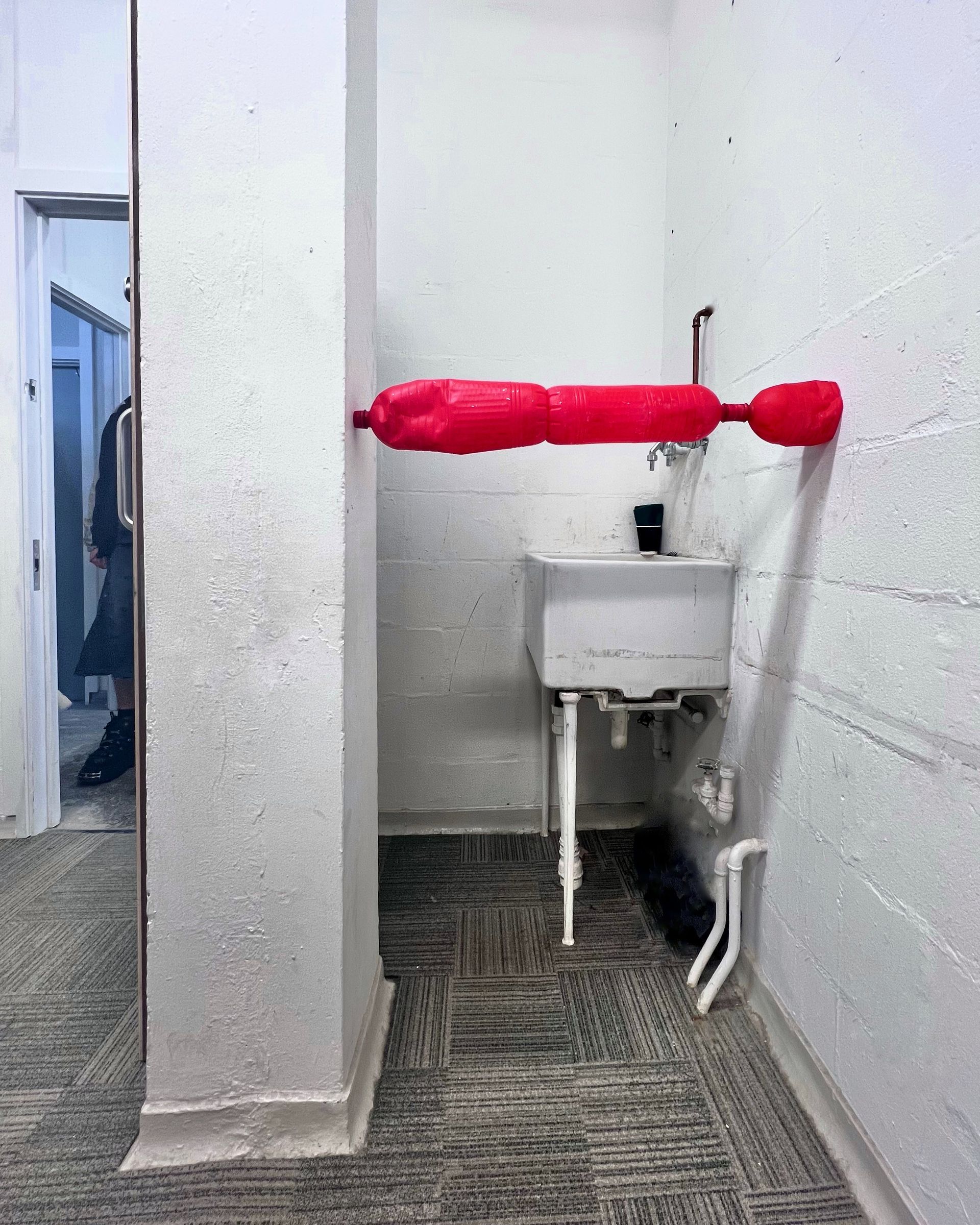
The limbo, 2022, Found objects, acrylic paint
The work consists of various personal discarded objects and packaging that have been individually hand-painted with red acrylic paint. These objects are carefully balanced between a pillar and a wall, held in place solely by their weight.
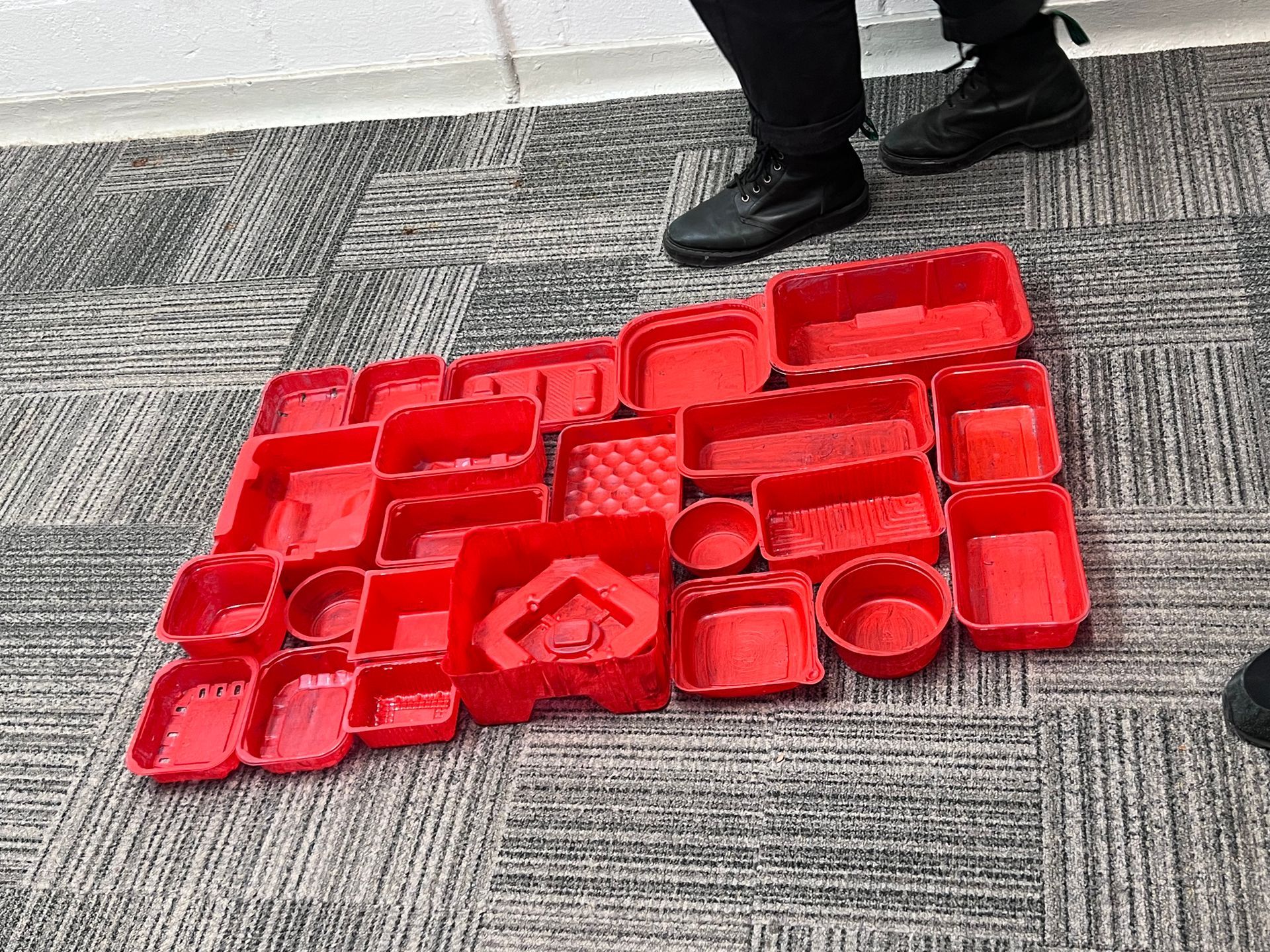
and then they where something else, 2022, Found objects, acrylic paint
Barbara Chase-Riboud's exhibition at the Serpentine Gallery highlights that, in three-dimensional form, red is the most alluring colour in the spectrum. It elicits a strong emotional reaction in the viewer, and the eye is naturally drawn to this rich and captivating shade.
I employ the use of bright and alluring red to increase visibility and evoke emotion in my work. I utilise colour as a tool to prompt individuals to alter their attitudes and actions towards waste management.

precious, 2022, Found objects, acrylic paint
Smashed cans remade in plaster and wax
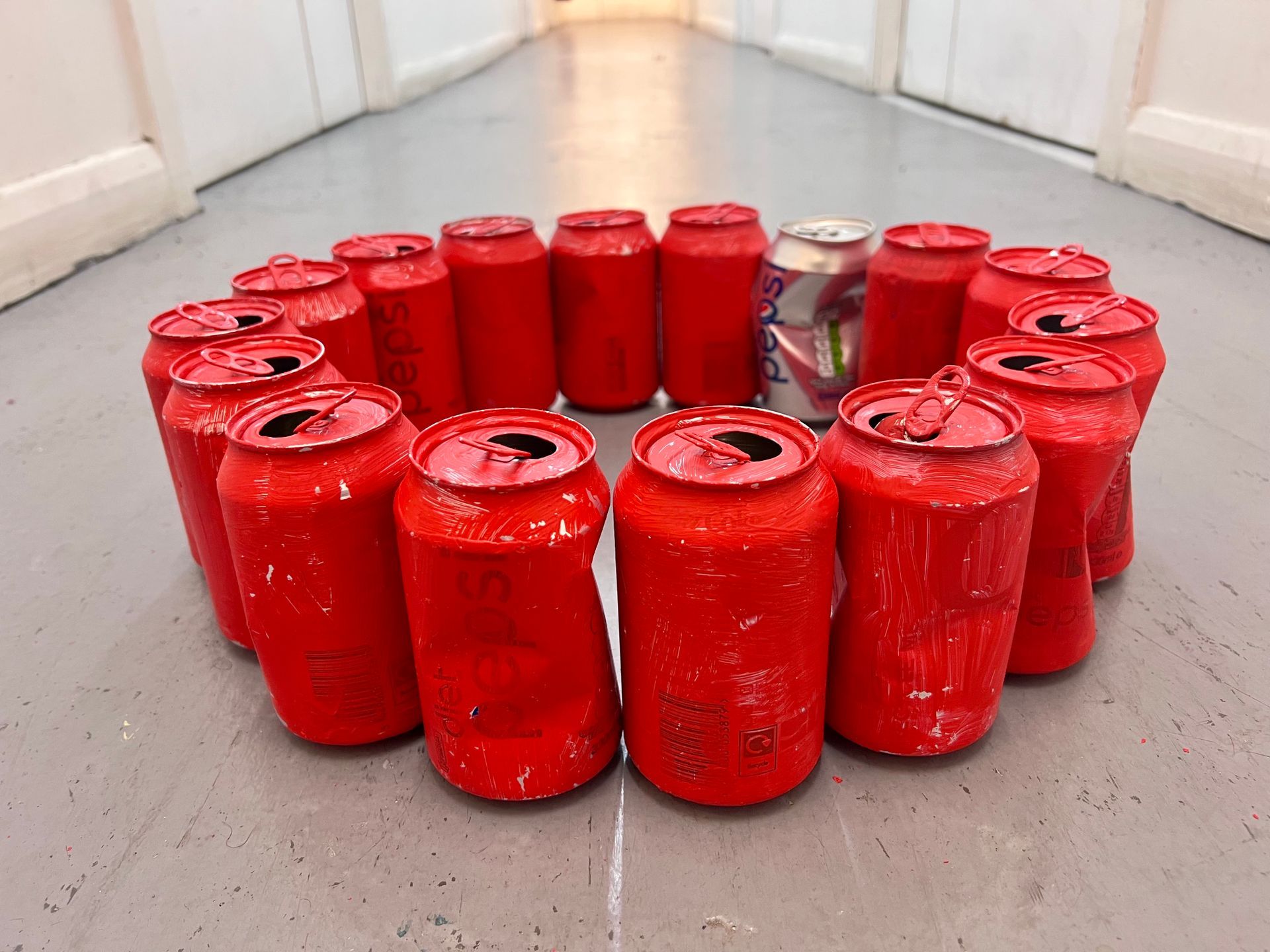
recicled, 2023, Found objects, acrylic paint

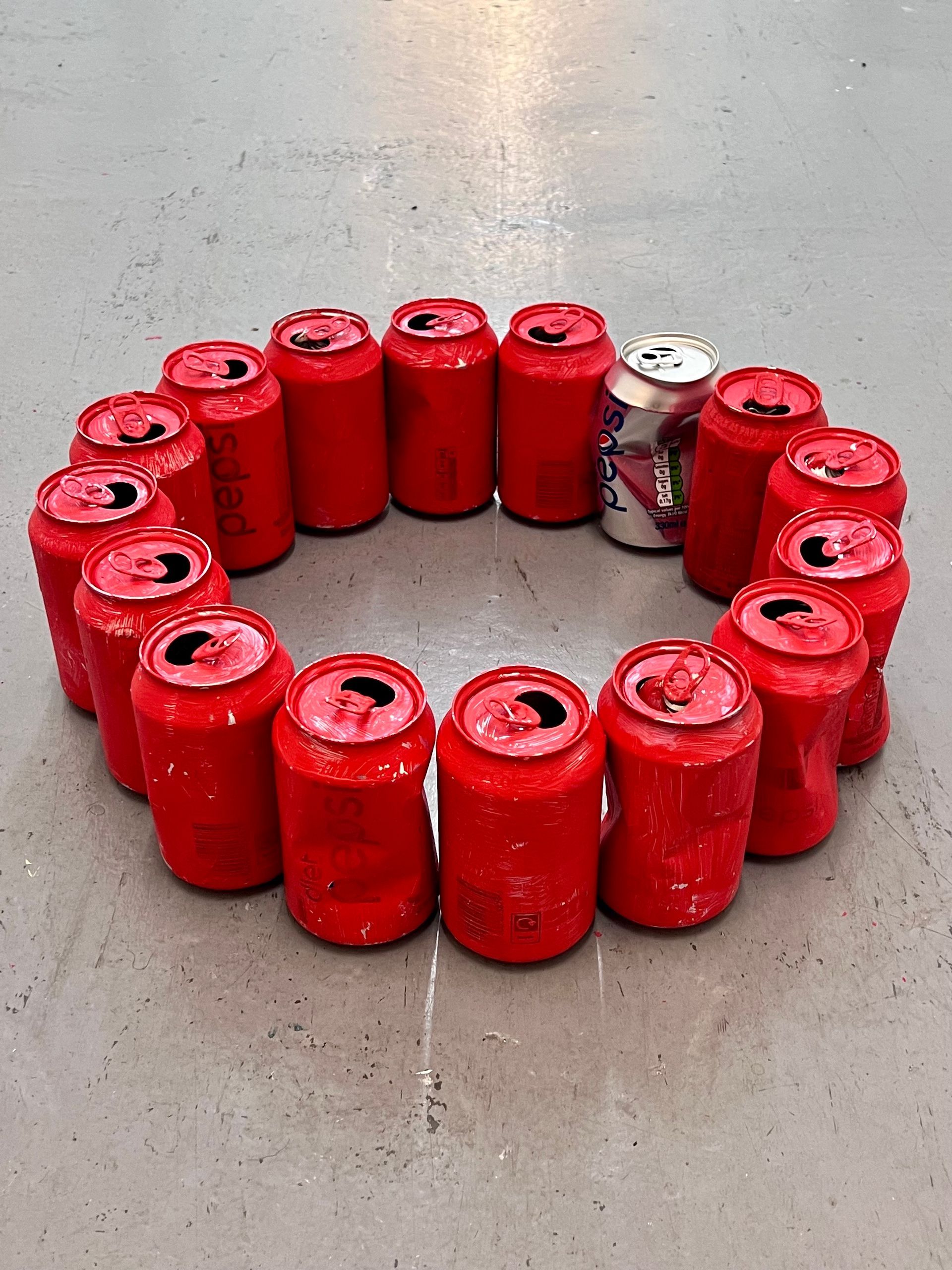
recicled, 2023, Found objects, acrylic paint
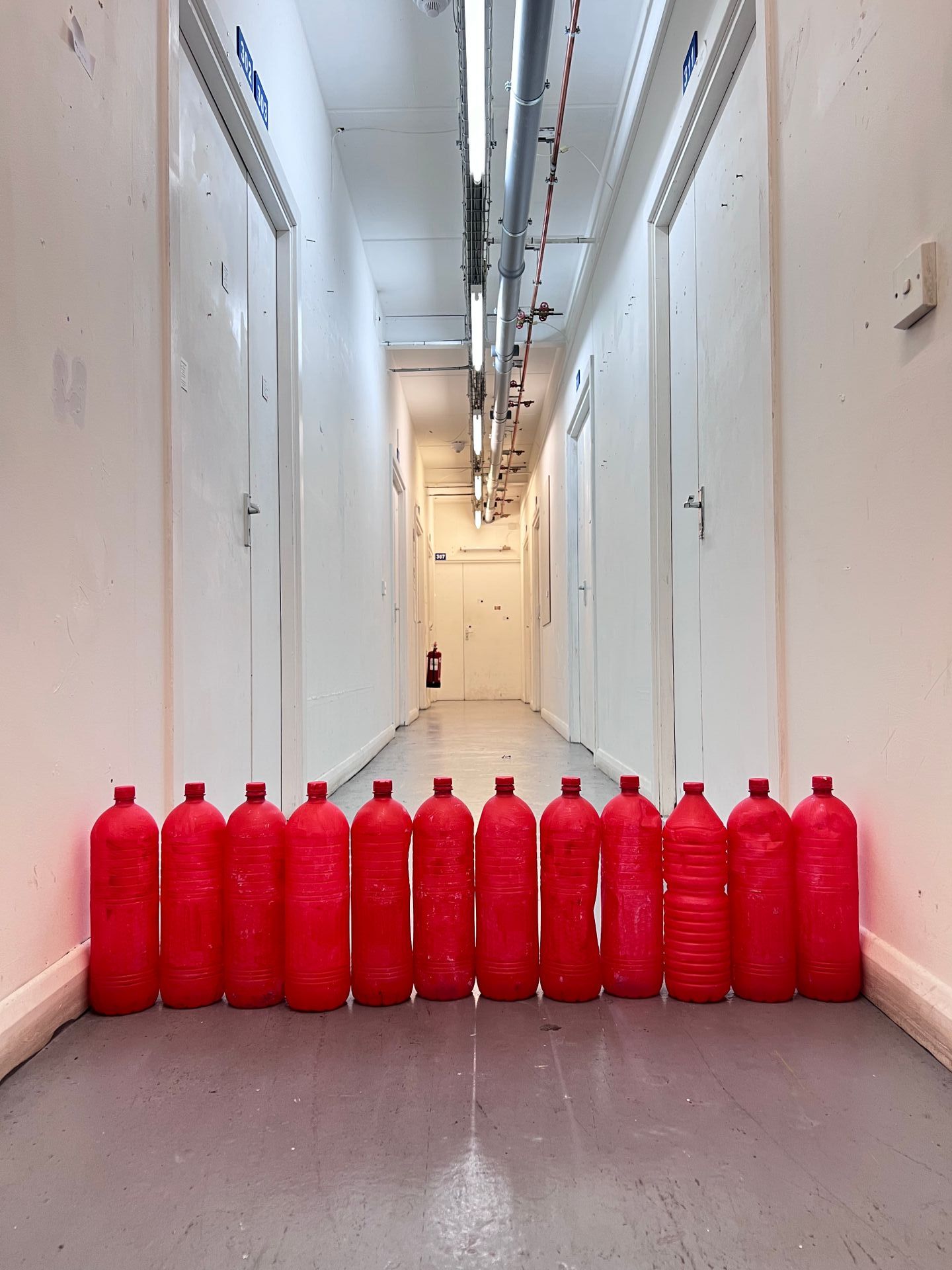
Colour red
In art, red is often associated with passion, energy, and power. It is a warm colour that can evoke feelings of love, anger, and excitement. Historically, red pigments were expensive and difficult to produce, making it a symbol of wealth and status in many cultures. In painting, red is often used as a focal point, to draw the viewer's eye and create a sense of movement or drama in the composition.
In Chinese art, red is considered a lucky colour and is often used in auspicious themes and motifs. In Western art, red is used to create a sense of depth and volume, as it is a colour that appears to come forward in space. This is due to the way our eyes perceive colour, as red light has a longer wavelength than other colours.
In contemporary art, red has been used as a symbol of political and social commentary, as well as a representation of the human condition. The use of red can be found in the works of many artists such as Mark Rothko, Barnett Newman, and Yves Klein, who used it to evoke emotions and create a sense of transcendence.
I use the colour red to evoke powerful emotions and create a sense of movement and drama in this work. It is a colour that holds a lot of symbolic and cultural meaning for me.
Pepsi Cans
Soda cans have been used as a medium in contemporary art as a way to comment on consumer culture and waste. Many artists use soda cans as a way to draw attention to the environmental impact of single-use packaging and the wasteful nature of consumer culture.
For example, the use of soda cans in the work of artists such as Chris Jordan, can be seen as a way to comment on the scale of waste and consumption in contemporary society. His works depict large-scale images created from thousands of individual soda cans, highlighting the enormity of the problem and making a powerful statement about the impact of consumer culture on the environment.
In addition to commenting on waste and consumer culture, some artists also use soda cans as a way to comment on social and political issues. For example, the use of soda cans in the work of artists such as Barbara Kruger, can be seen as a way to comment on the role of advertising and consumer culture in shaping societal values and beliefs.
Soda cans are also used by artists as a way to comment on the environmental impact of single-use packaging and the wasteful nature of consumer culture. For example, the use of soda cans in the work of artists such as Eduardo Sanson, can be seen as a way to comment on the environmental impact of single-use packaging and the wasteful nature of consumer culture.
Similarly I aim to use of soda cans in my works to comment on consumer culture, waste, social, political, and environmental issues. Through the use of this medium, I intend to make active statements about the impact of consumer culture on society and the environment, and to raise awareness about the need for more sustainable practices.
The circle and Circular Economy
The circle is often used as a symbol of unity, wholeness, and infinity, and to explore themes of continuity, cyclical nature of life, mystery and wonder. In addition, the circular economy is an economic system that is based on the principles of using and reusing resources, minimising waste and pollution, and preserving natural capital. Some artists use the circle as a symbol of the cyclical nature of the economy and the need to keep resources in use.
Circular economy in contemporary art refers to the practice of creating, producing, and consuming art in a way that is environmentally sustainable and socially responsible. This approach to art-making is based on the principles of the circular economy, which seeks to eliminate waste and pollution by designing products and systems that are regenerative and restorative by intention.
In contemporary art, this can manifest in a variety of ways such as using sustainable materials, recycling and repurposing found objects, and exploring themes related to environmental issues and social justice, that is ultimate my aim in my practise.
I am planning to experiment with new materials and techniques that align with the circular economy principles. For example, in addition to my use of recycled materials like plastic waste, discarded household objects to use digital technologies and virtual reality to create artworks that can be experienced online, reducing the need for physical materials and transportation.
Additionally, I am interested in the growing interest in socially engaged art, where artists work directly with communities to address issues related to the environment, social inequality, and other social justice concerns.
Pe aici nu se trece II (this way you can't go), 2023, Found objects, acrylic paint
In this work I created a wall out of discarded water bottles painted red, as they can symbolise physical and metaphorical barriers in society.
Artists often use walls and barriers in their work to comment on issues such as immigration, segregation, and political division. One example is the Berlin Wall, which was a major symbol of the Cold War and the division of Germany. Many artists have created works that reference the wall and its political significance.
Additionally, contemporary artist like Anish Kapoor and Ai Weiwei have also used the theme of walls and barriers in their work to comment on social issues such as immigration and political freedom.
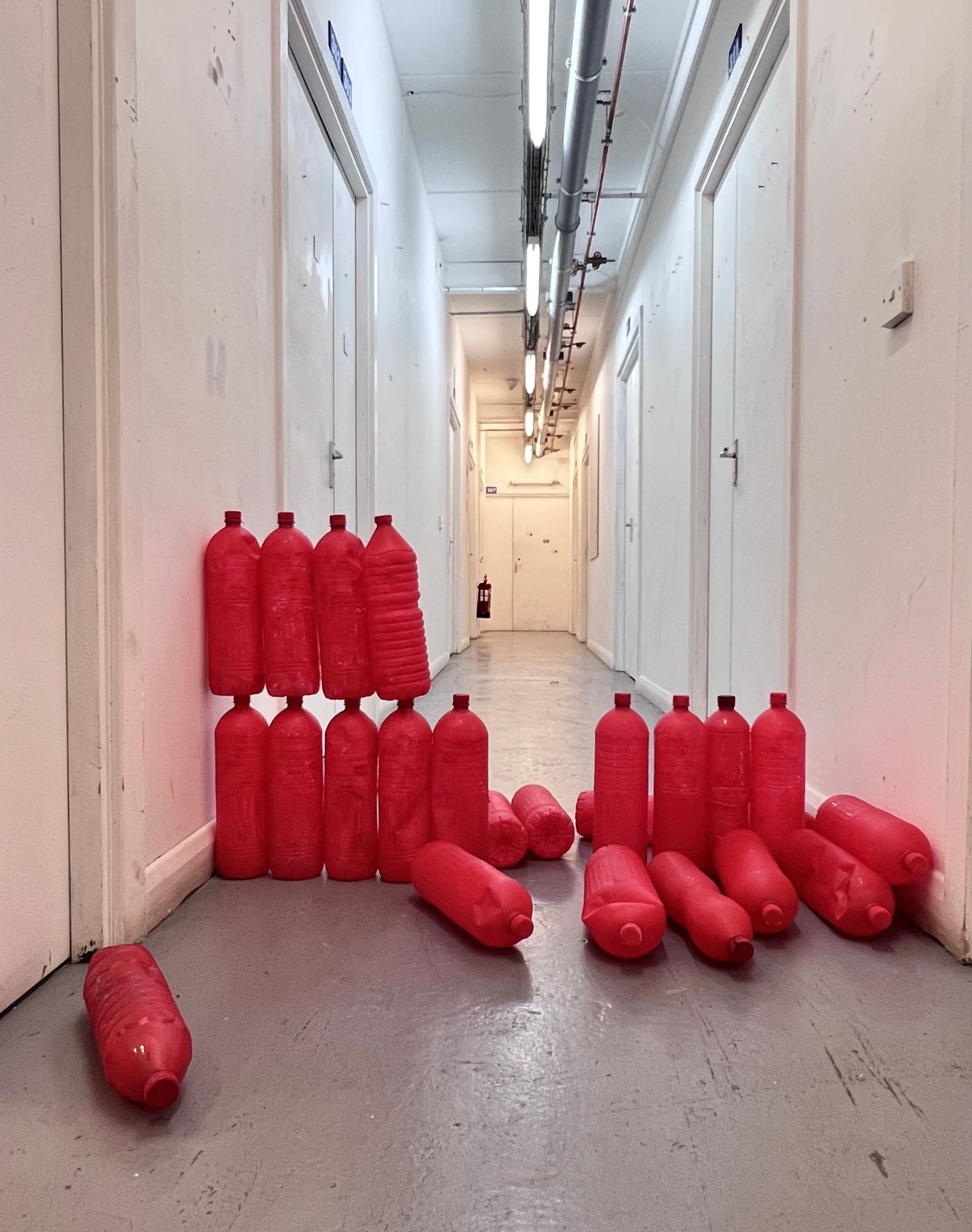
No return, 2023, Found objects, acrylic paint
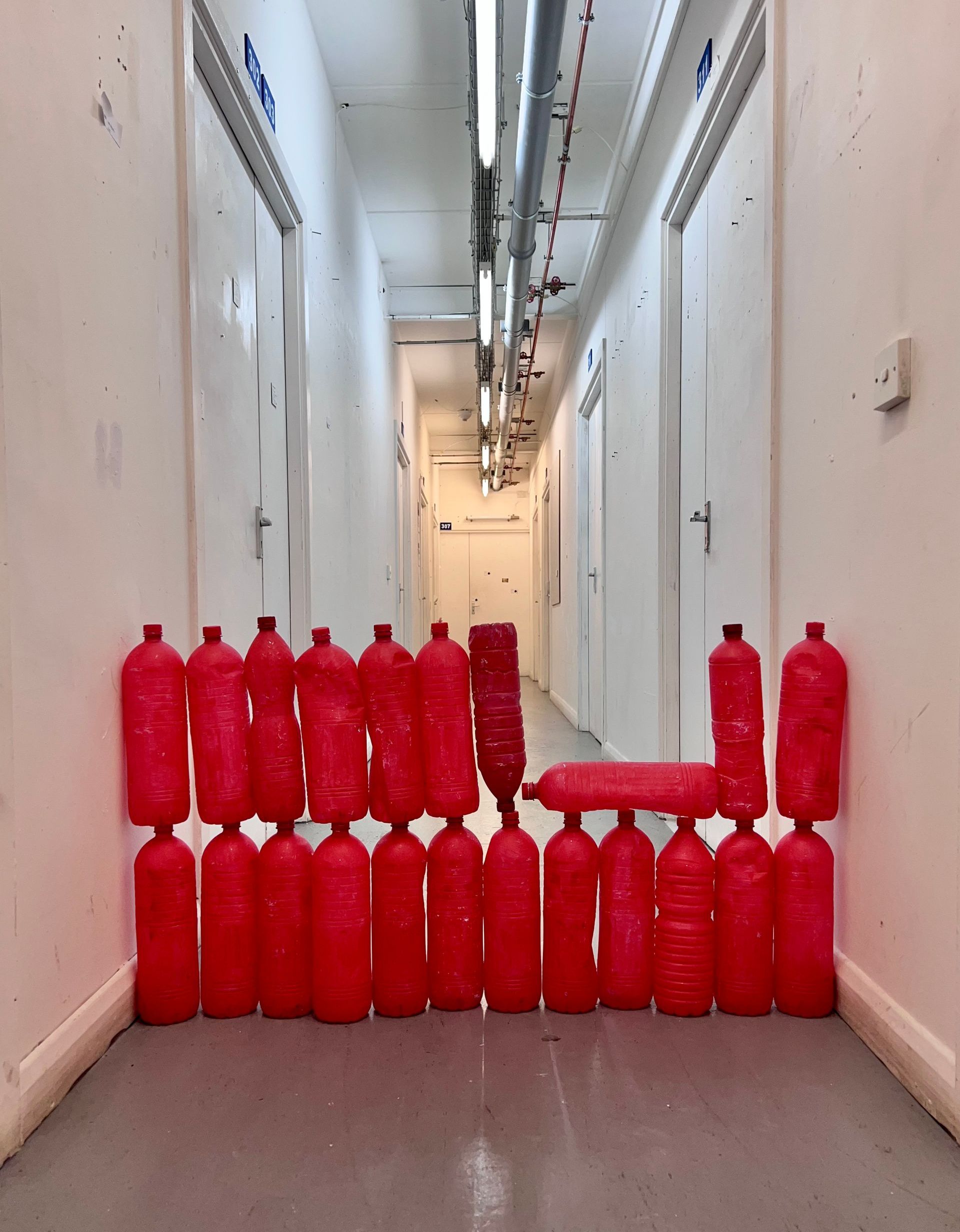
Crossing, 2023, Found objects, acrylic paint
I incorporate memories from my childhood in Romania during a Communist regime, where censorship was prevalent, into my work. The colour red holds particular significance for me due to its association with the Communist regime. I am to answer the question how colour influences our perceptions and experiences during early life compared to adulthood?
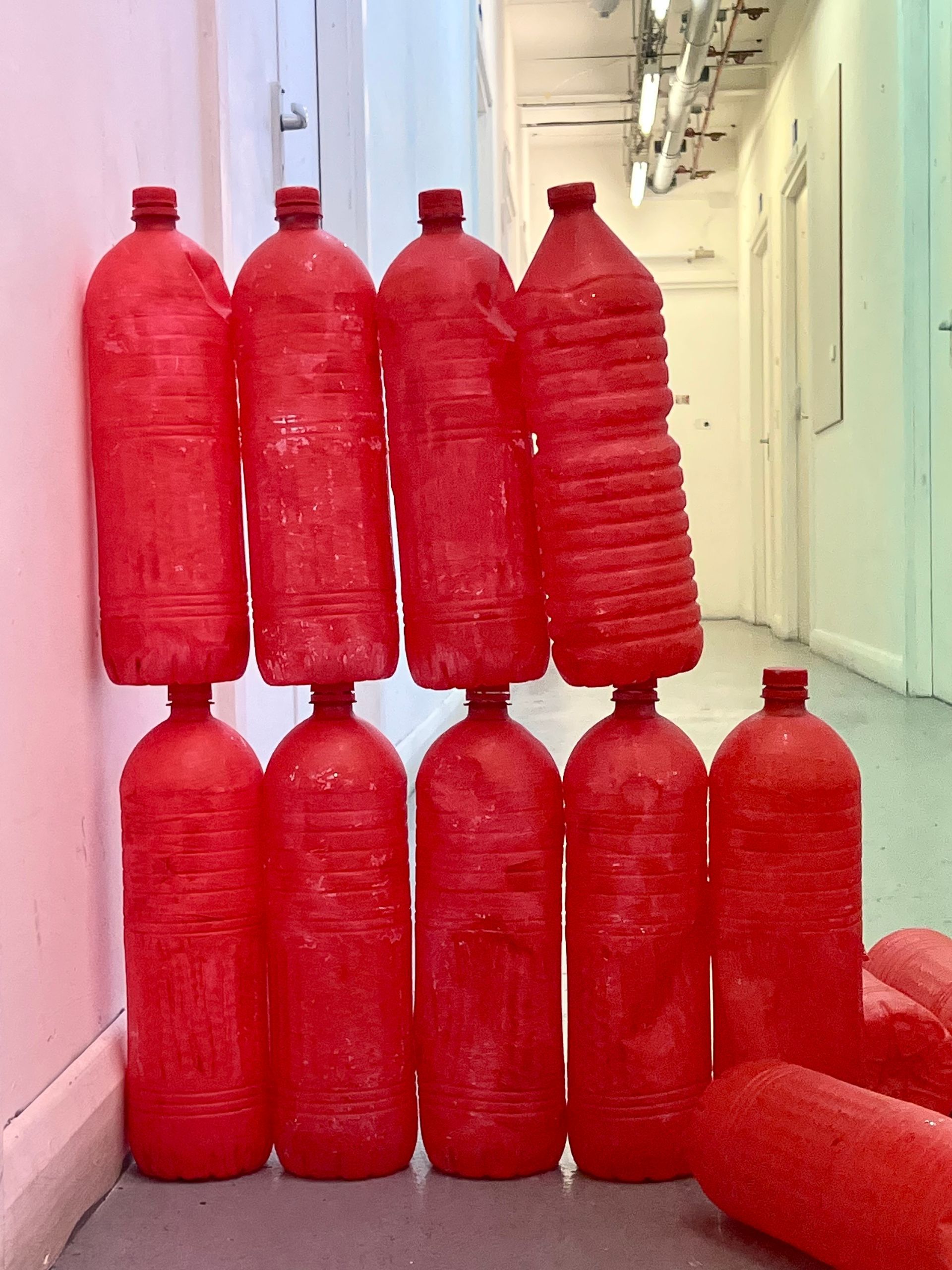
Crossing, 2023, Found objects, acrylic paint (detail)
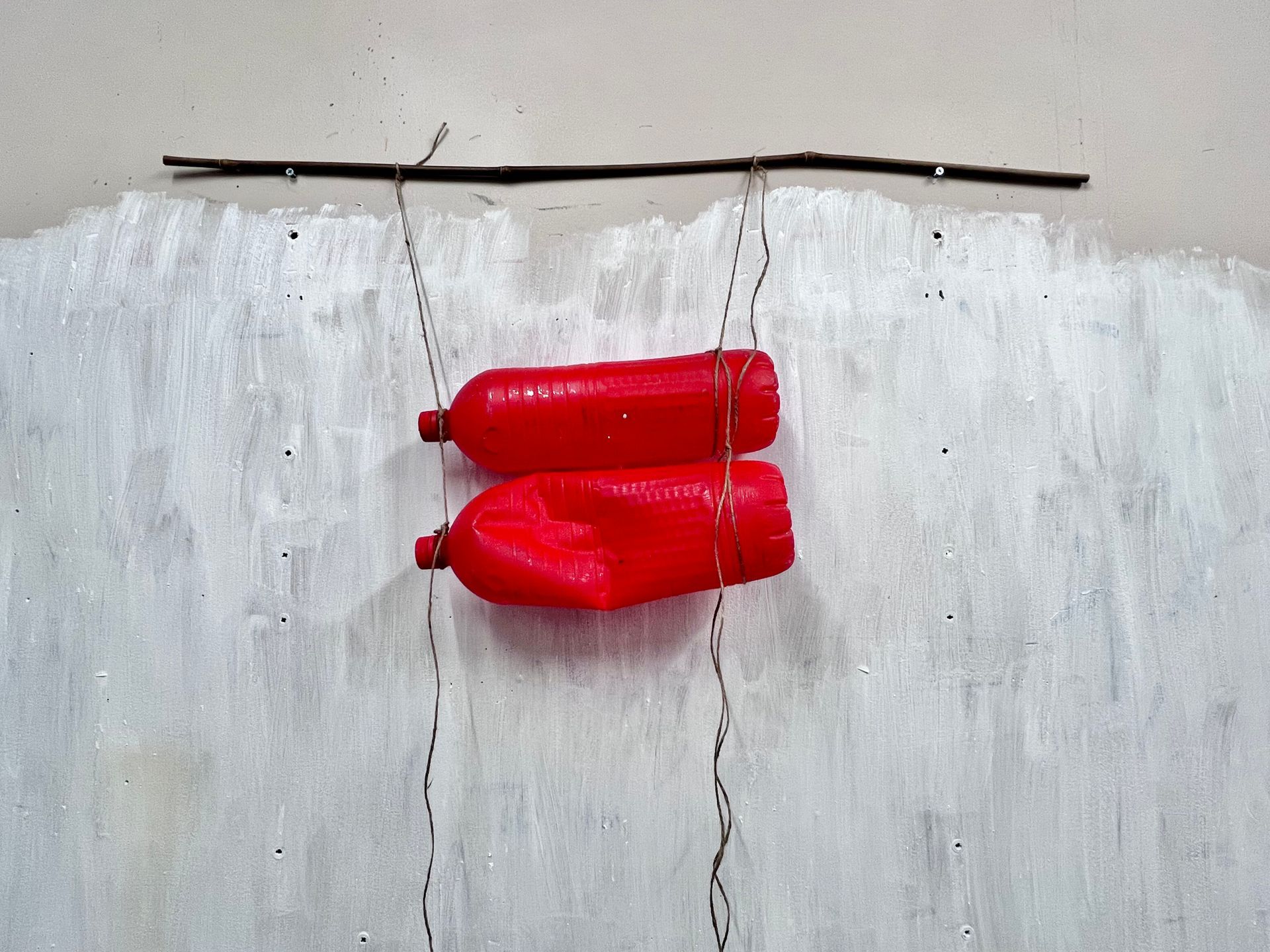
Experiment, Found objects, acrylic paint
My work aims to investigate the relationship between consumption, waste and the environment. I utilise discarded objects as materials to recycle, repurpose and remake through necessity, tradition, culture and innovation, while also fostering a connection to the natural environment.
I aim to examine themes of impermanence and fragility in nature, as well as investigate the cultural meanings embedded in materials.
I aim to question the value society assigns to objects and the ways in which objects convey meaning to the places and times we inhabit
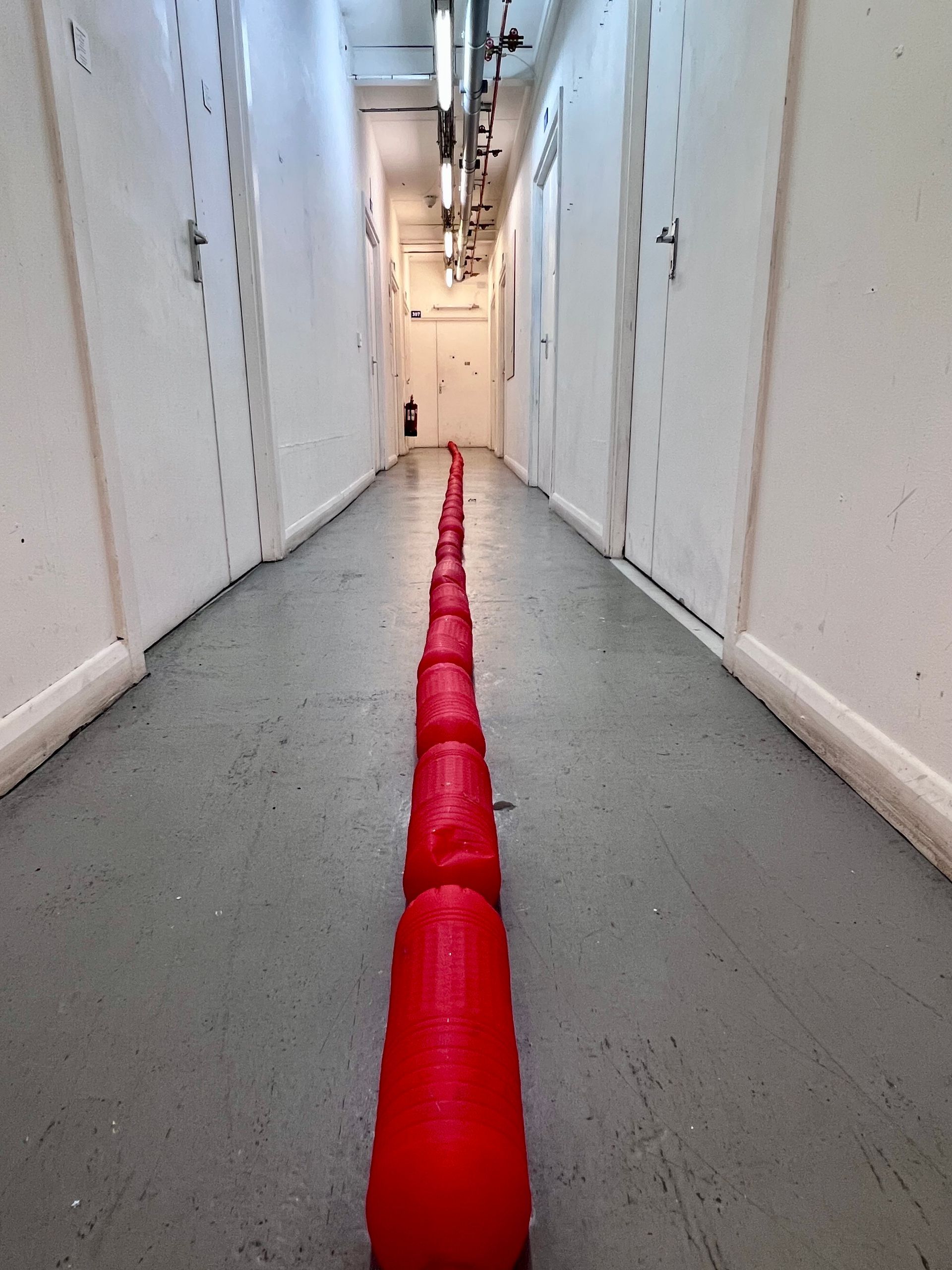
450, 2023, Found objects, acrylic paint
In this work the repetition of the objects in a line formation creates a sense of movement or flow, and can also serves to draw attention to the individual objects and their collective impact. I used the long lines of recycled objects to comment on themes such as consumerism, mass production, and the relationship between the individual and the collective.
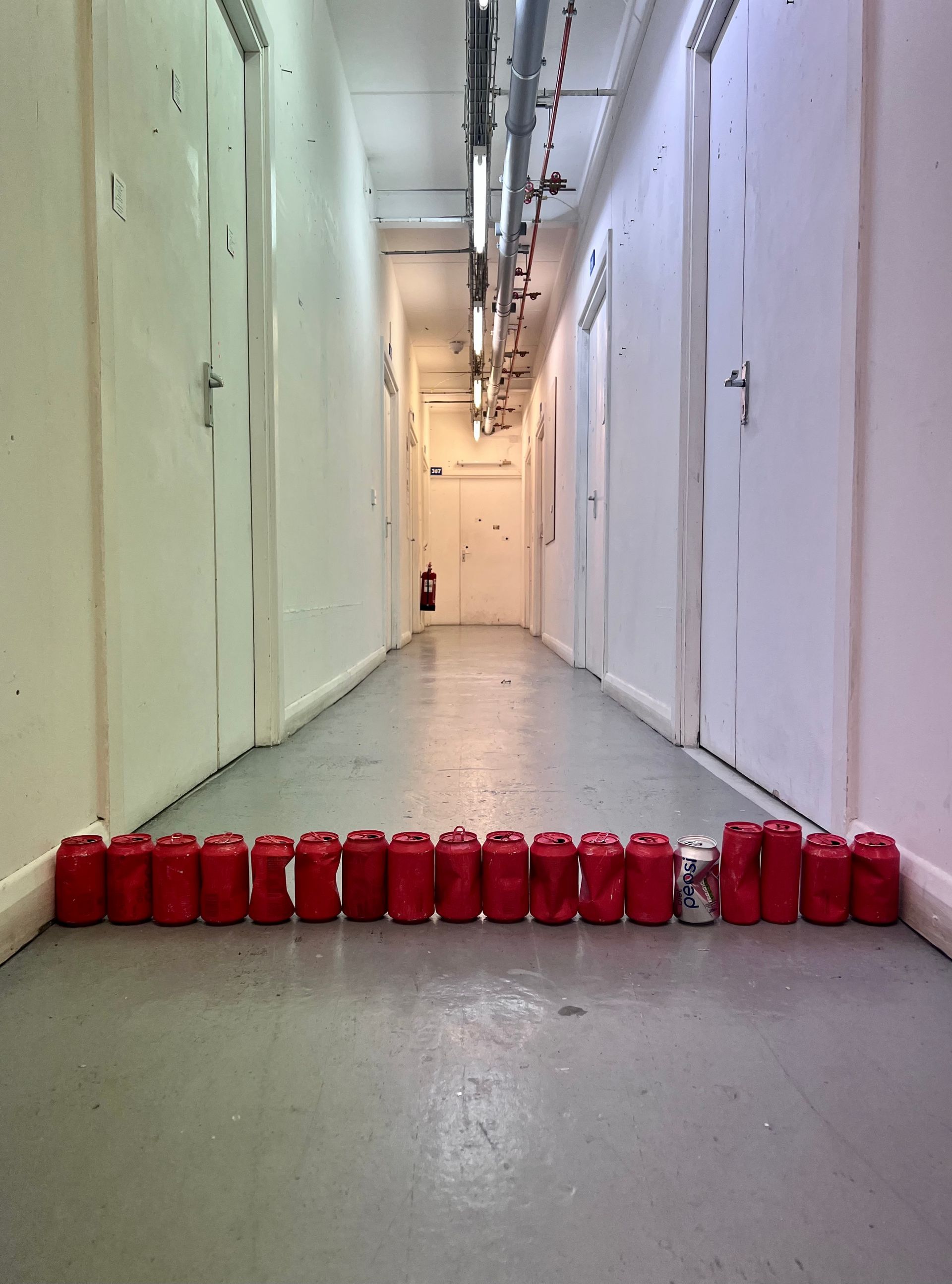
Pe aici nu se trece I (this way you can't go), 2023, found objects, acrylic paint
My artwork, which is heavily influenced by social realism, draws upon my childhood memories of living in Romania under a restrictive and censored Communist regime. I incorporate the color red as a nod to this period in my life. How does the significance of color change during childhood versus adulthood?
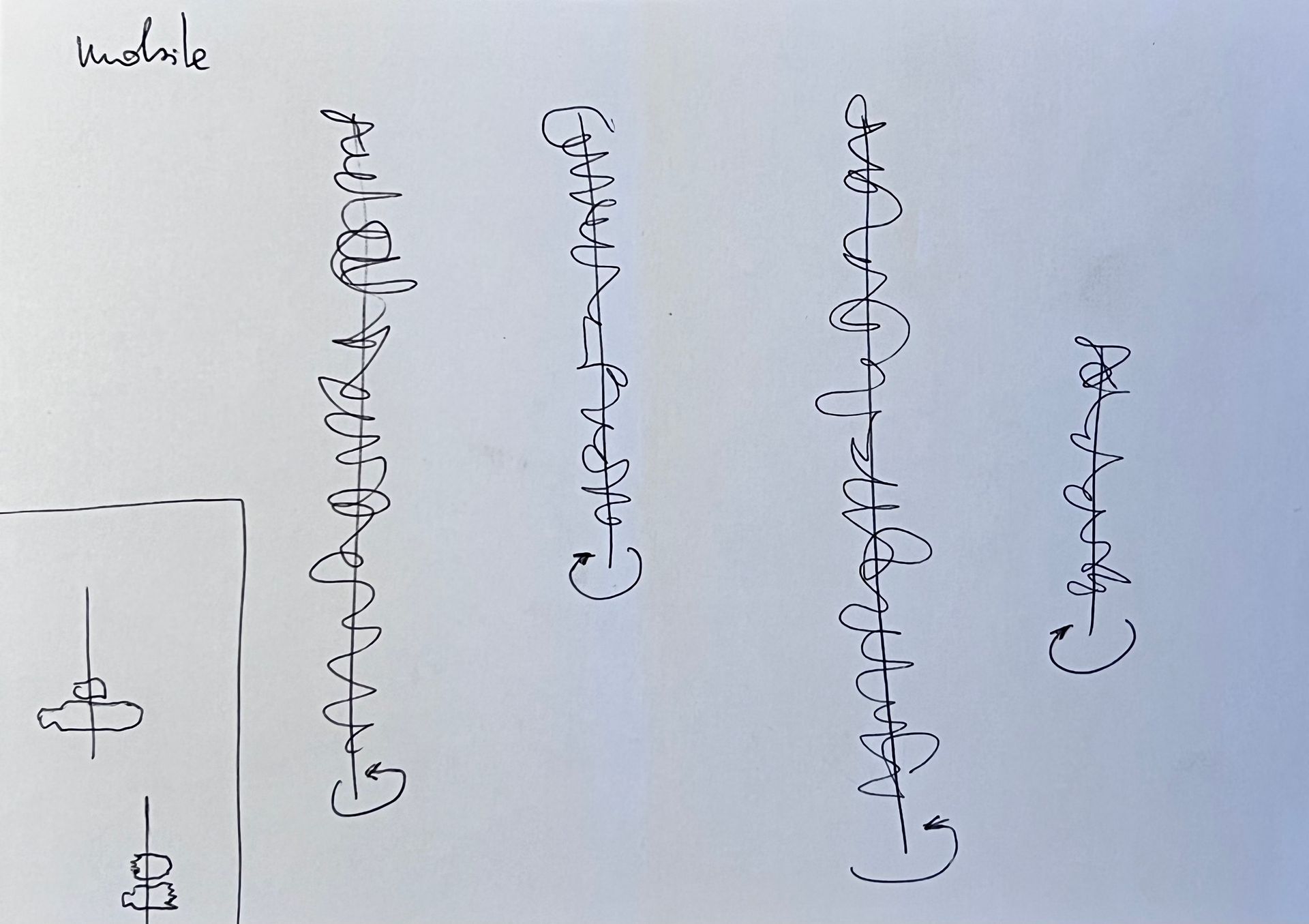
Exploratory drawings
My drawings are experiments in the style of constructivism and social realism art. Constructivism is an art movement that emphasises the use of geometric shapes and industrial materials to create works that reflect the modern world. Social realism, on the other hand, is an art movement that uses art to comment on social and political issues, often with the goal of inspiring change. My drawings combine elements of both styles to create unique, thought-provoking works that explore the themes of my childhood experiences living under a restrictive and censored Communist regime in Romania.
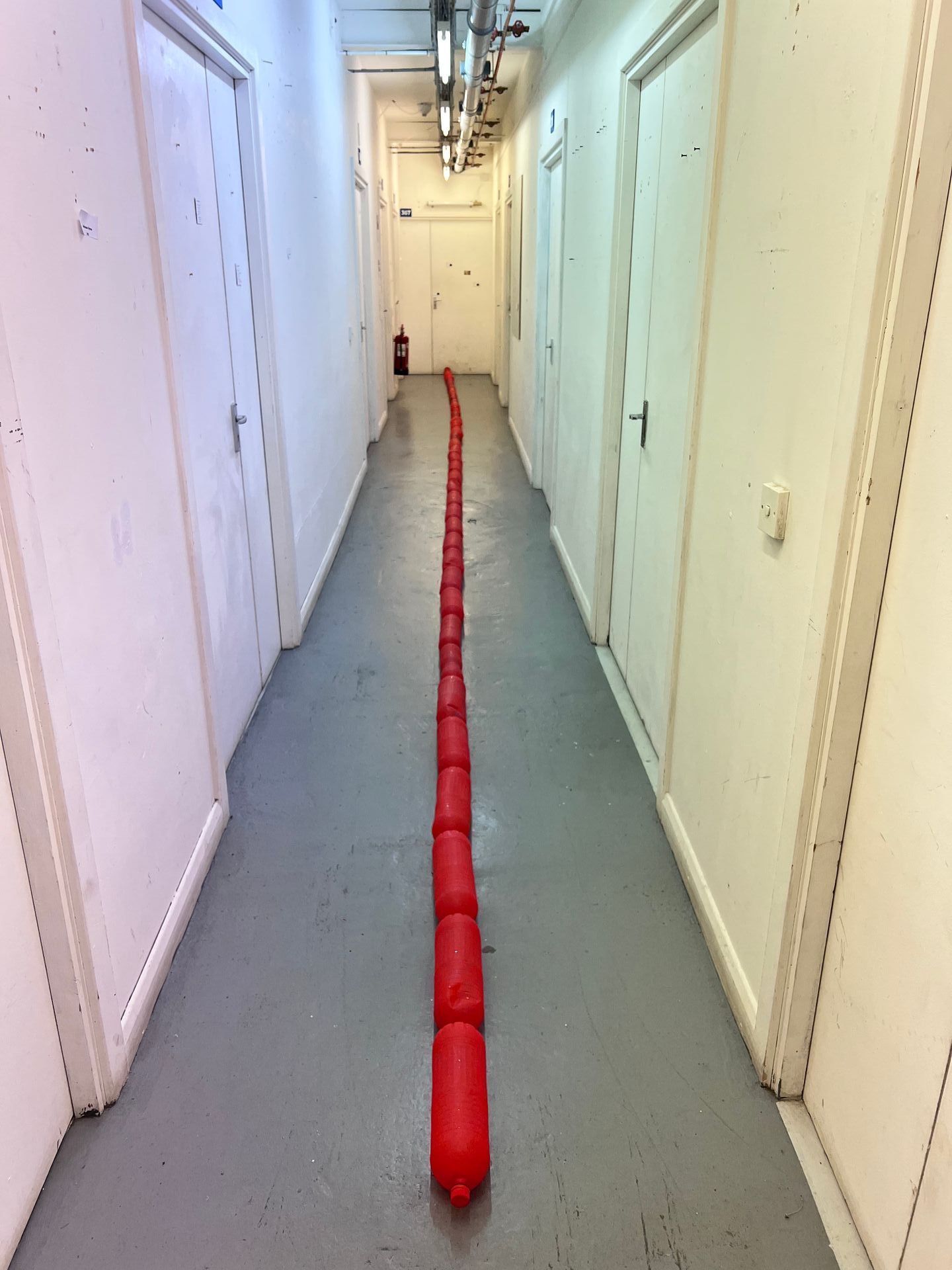
450, 2023, Found objects, acrylic paint
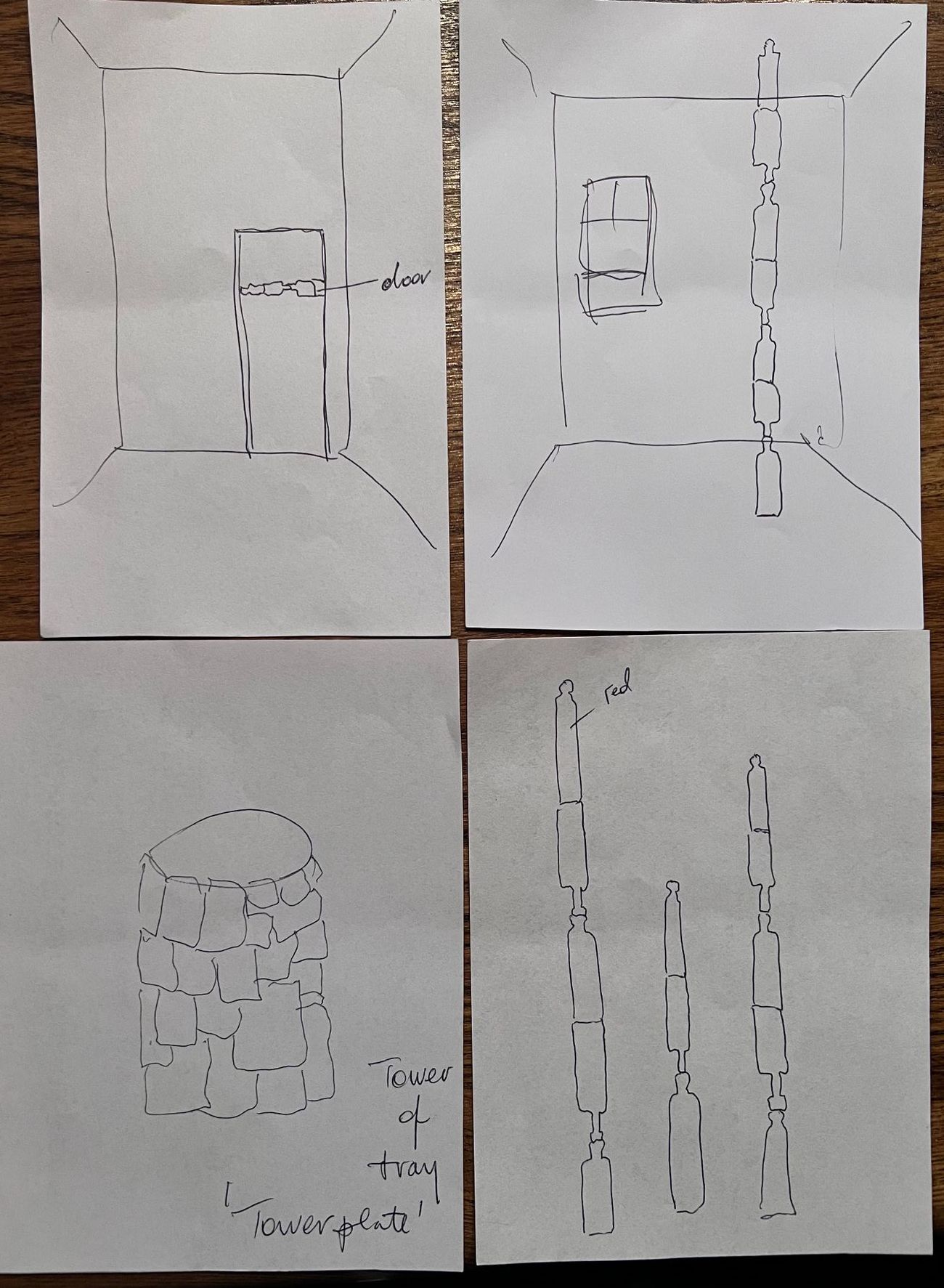
Exploratory drawings
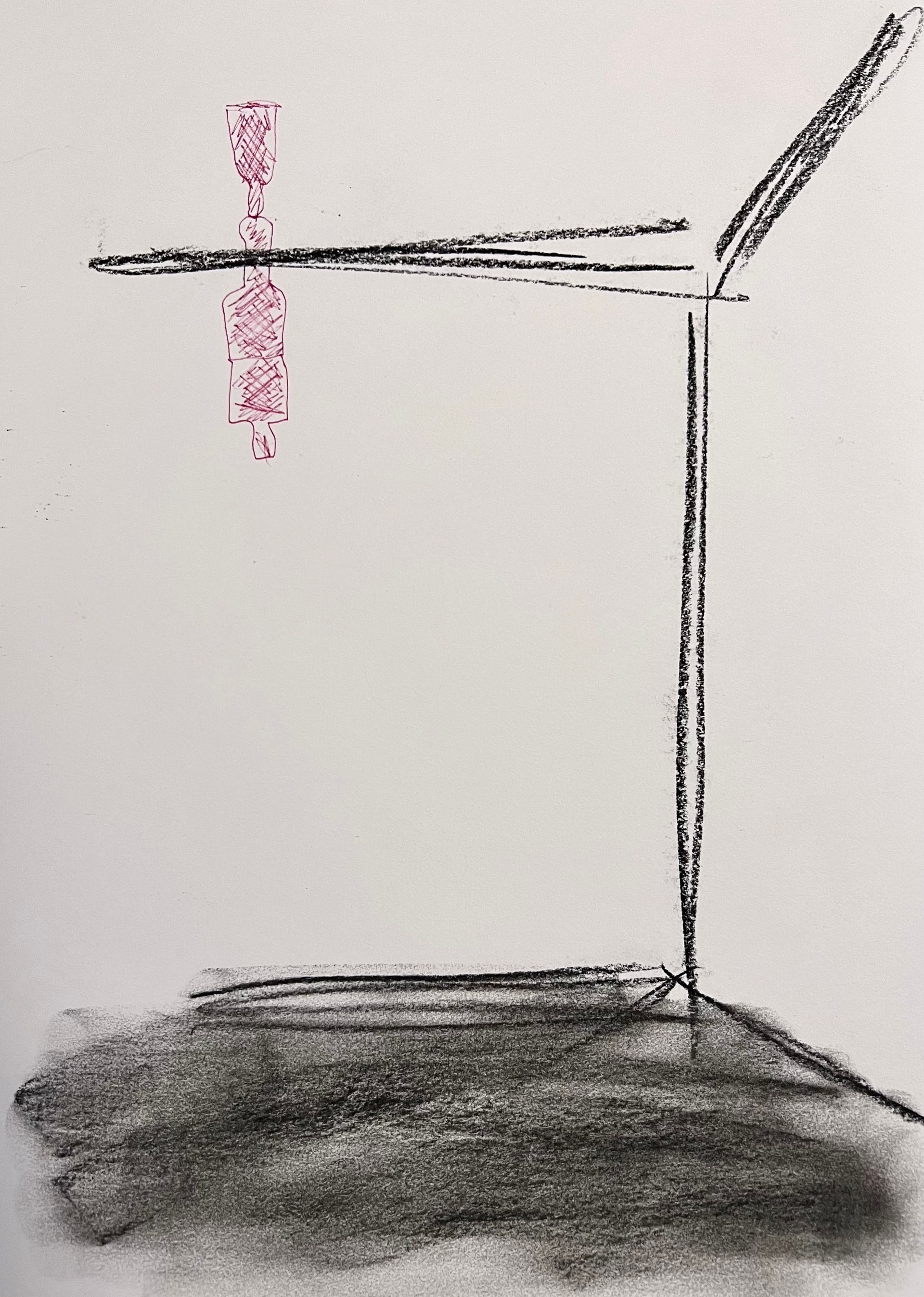
Exploratory drawings
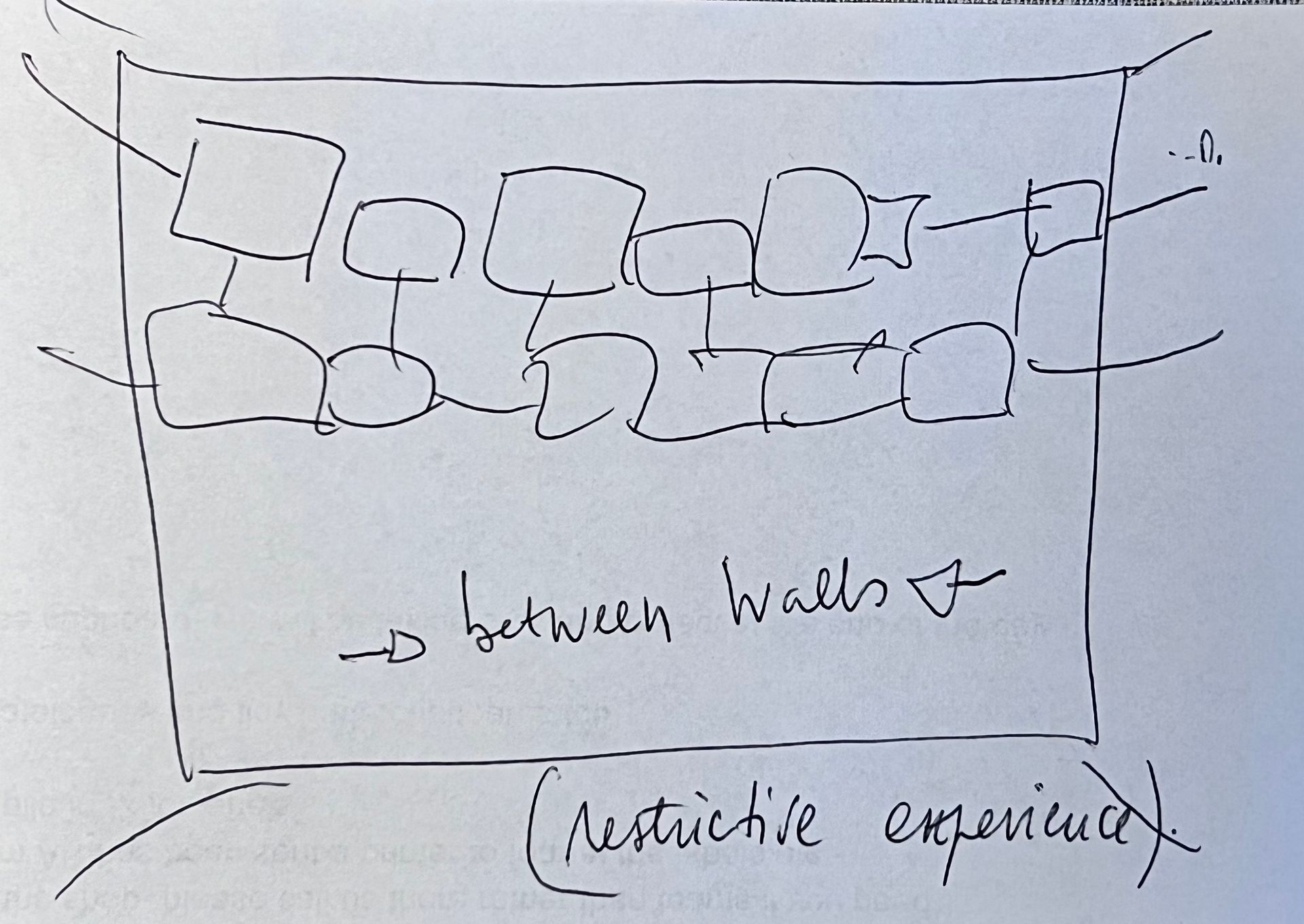
Exploratory drawings
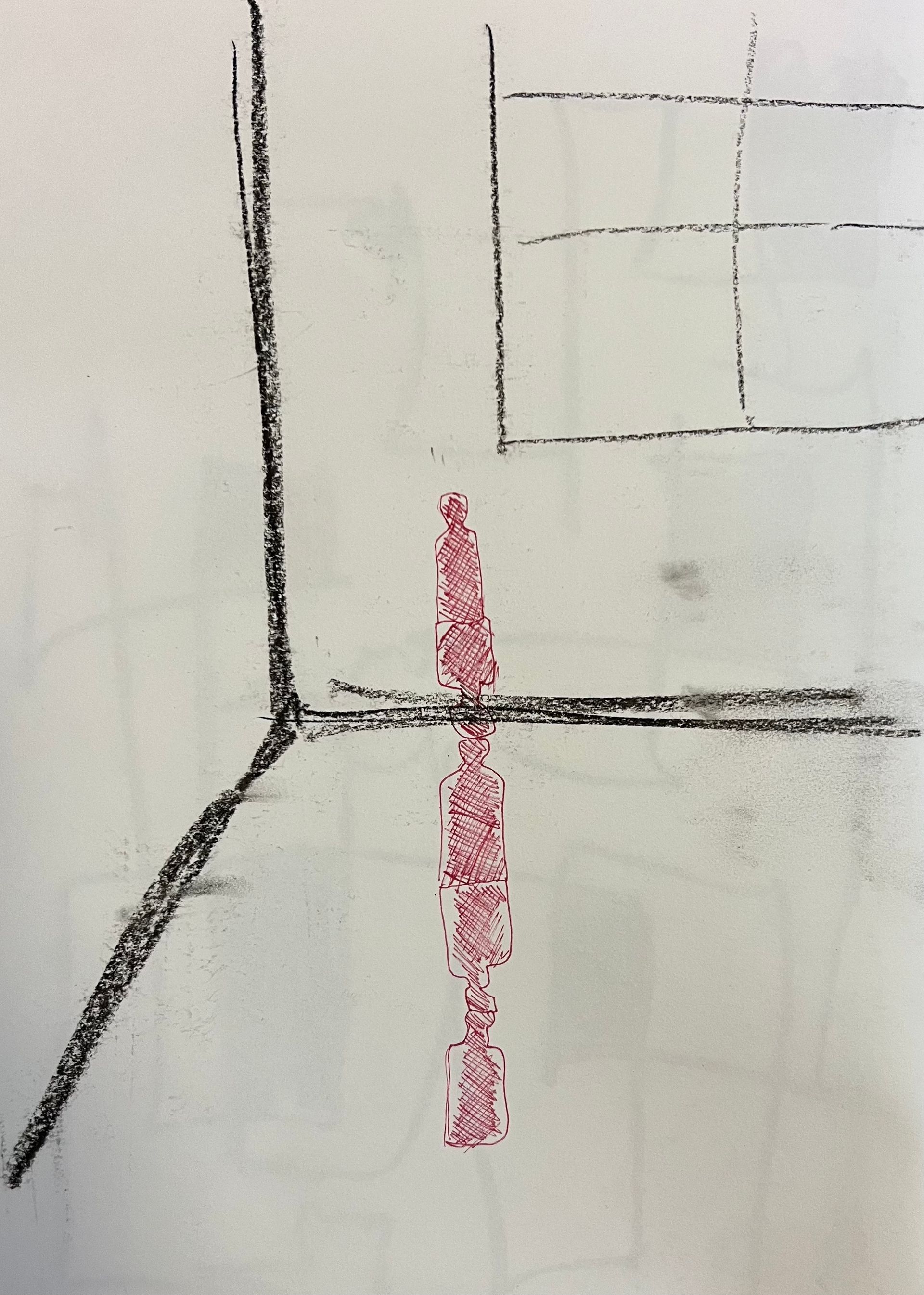
Exploratory drawings
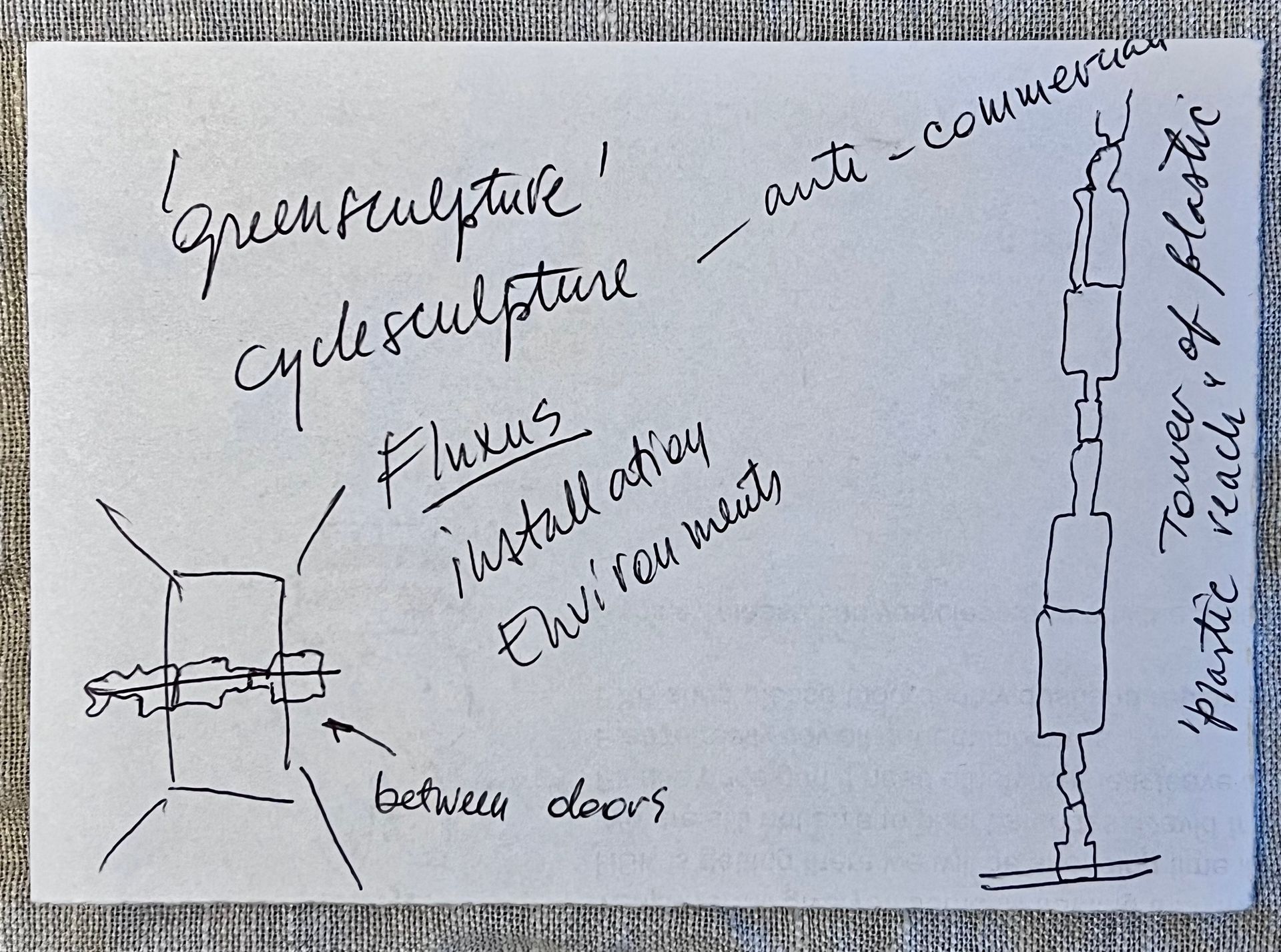
Exploratory drawings
Lost wax casting in bronze and aluminium
Lost wax casting is used to create a one-of-a-kind, detailed metal object by building a mould around a sacrificial wax model. Bronze is the most popular metal to use for casting sculptures because of its versatility and ease of casting. When casting bronze, the material expands just before it sets, helping bring even the most minor details to life. It also constricts as it cools, making removing the finished cast from the mould easier. Because bronze is copper-based, it has a lower melting point than most metals.
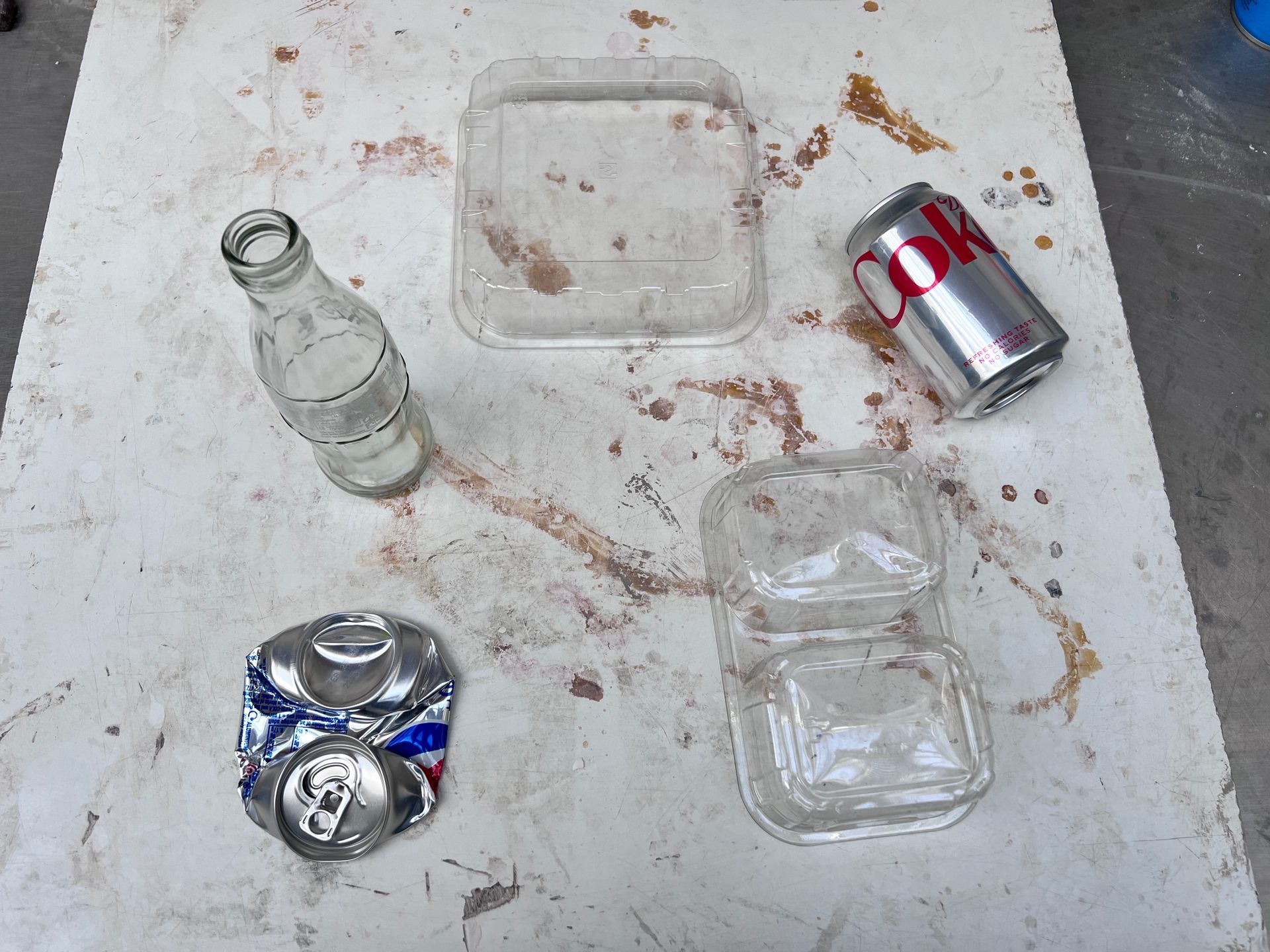
The found objects to be cast in bronze and aluminium.
I am using recycled items from my household to create sculptures, with the intention of elevating these otherwise discarded objects and giving them new value. I am exploring the idea of casting these objects in bronze as a way to enhance their perceived value.
Additionally, through this work, I am attempting to challenge traditional hierarchies of materials and question their perceived worth.
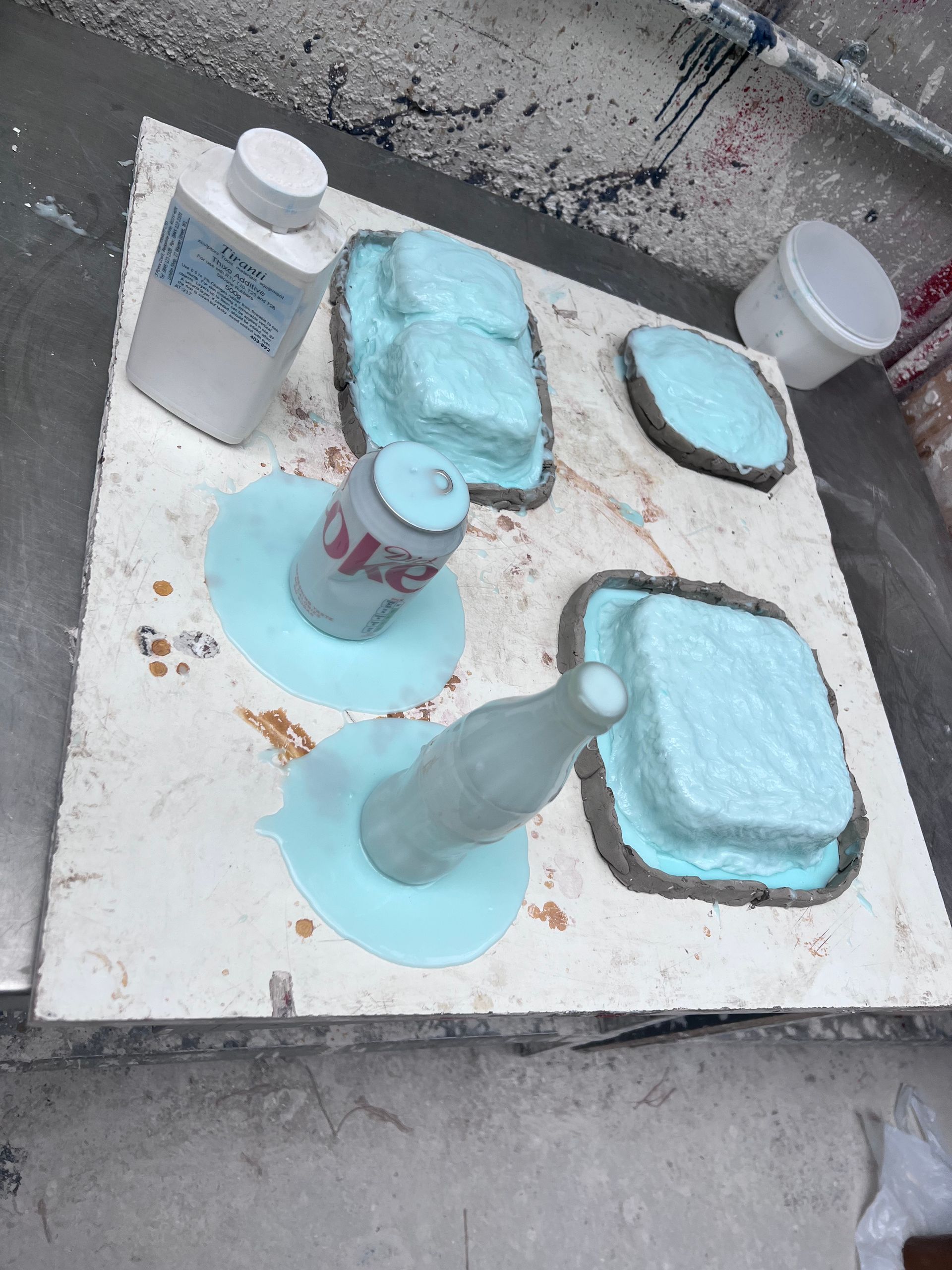
First stage - Making a silicone mould

The finished silicone mould with a plaster case of the coca-cola bottle
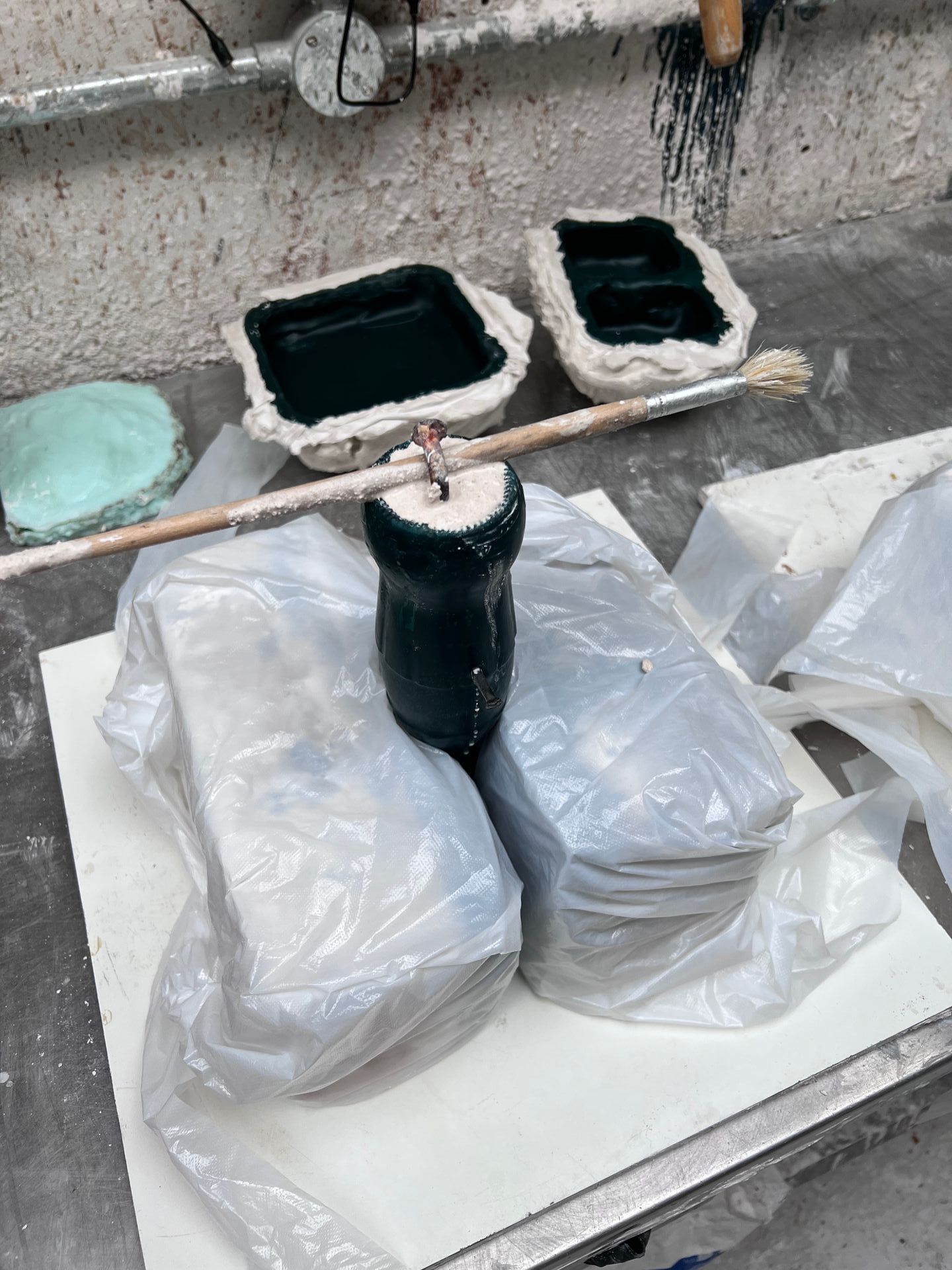
The wax of the coca-cola bottle being covered with a resistant material
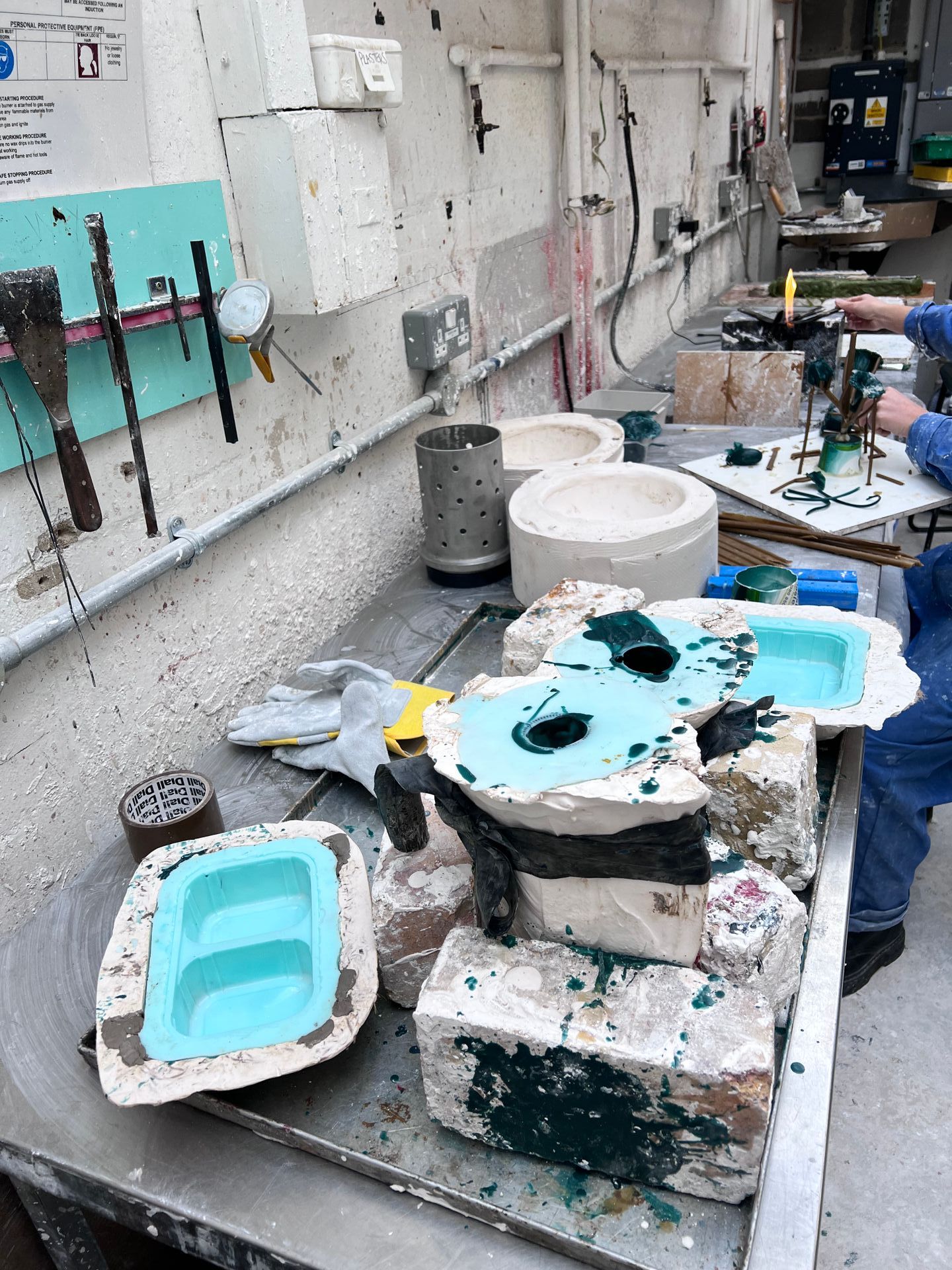
Making wax models
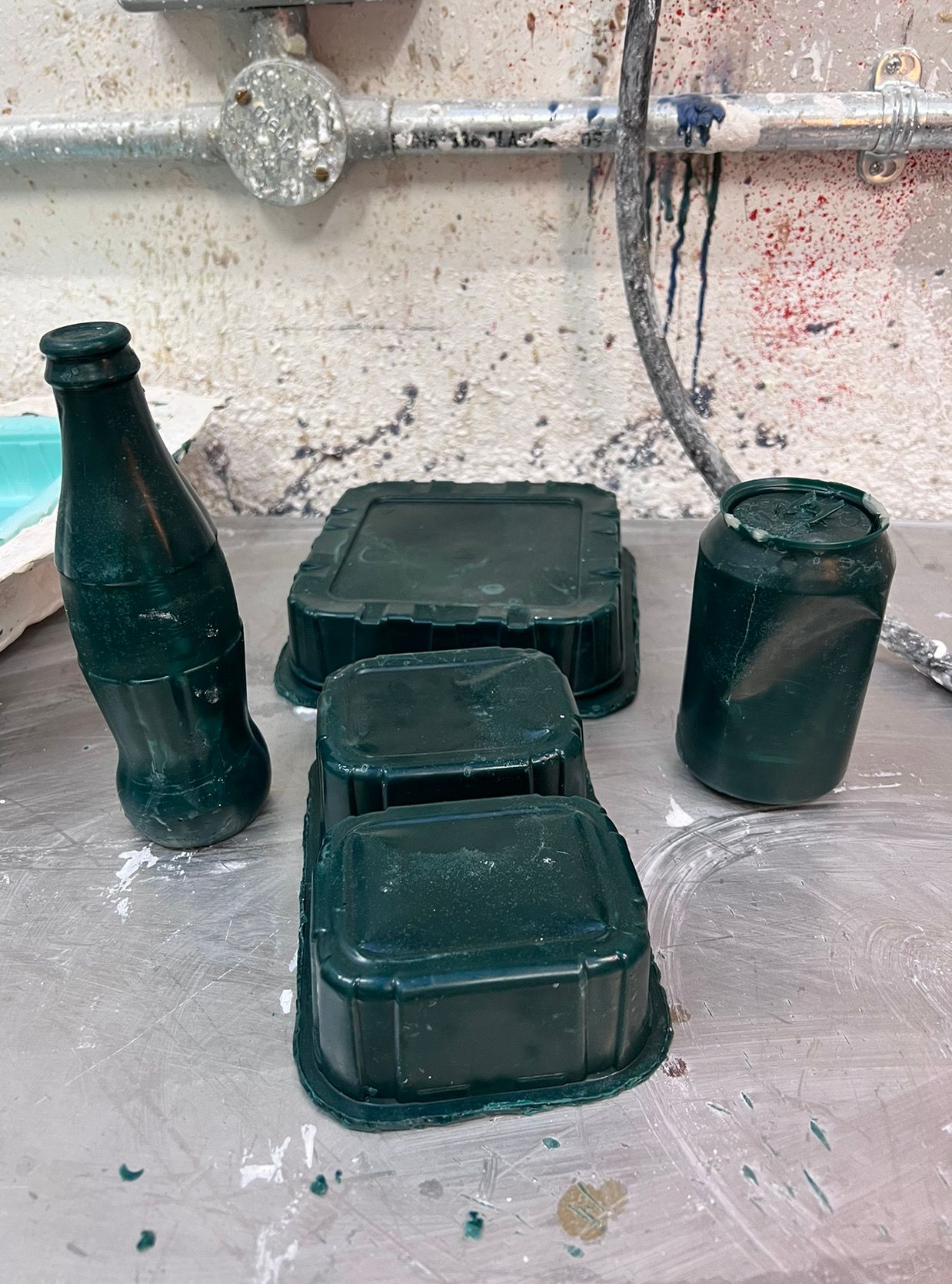
The wax models to be cast in bronze
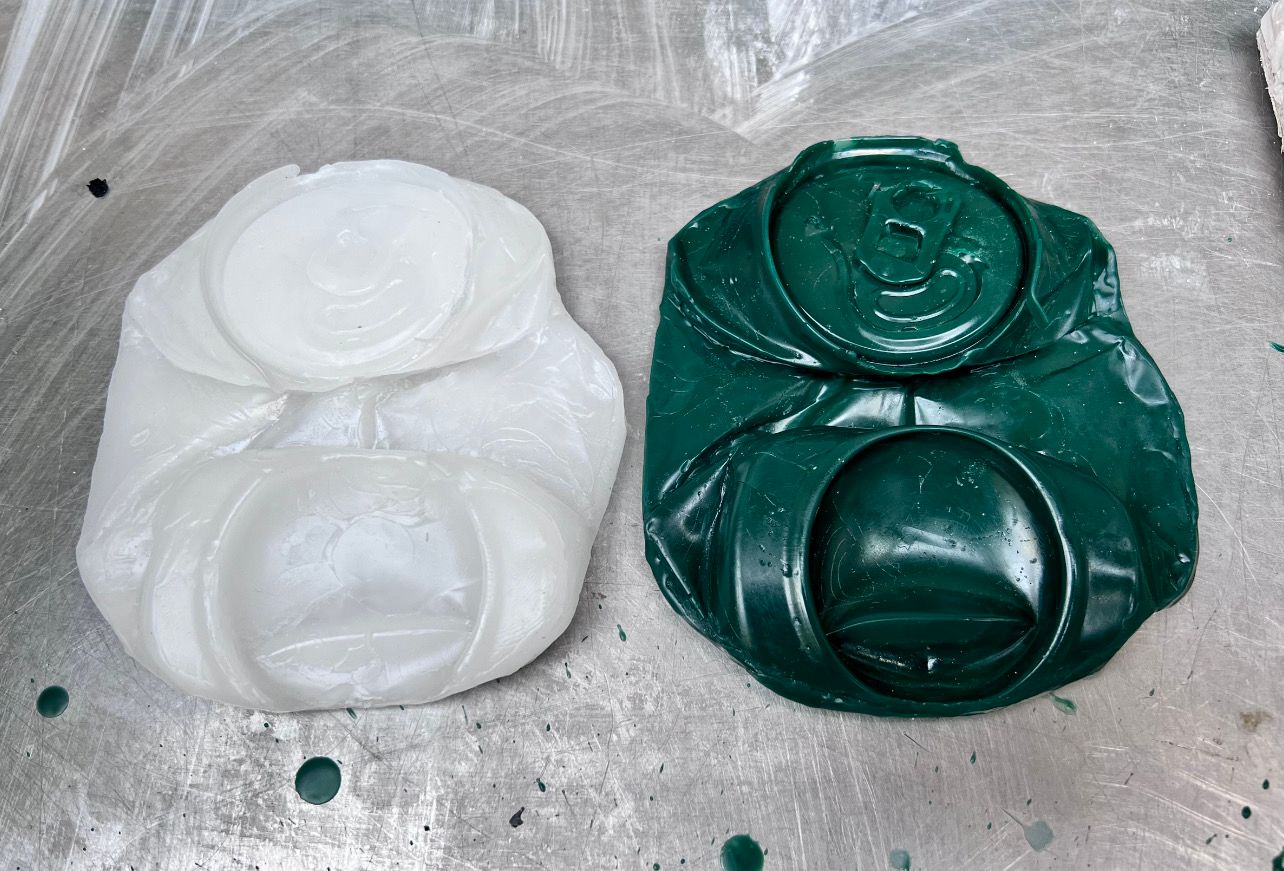
The wax models to be cast in bronze, white and dark wax
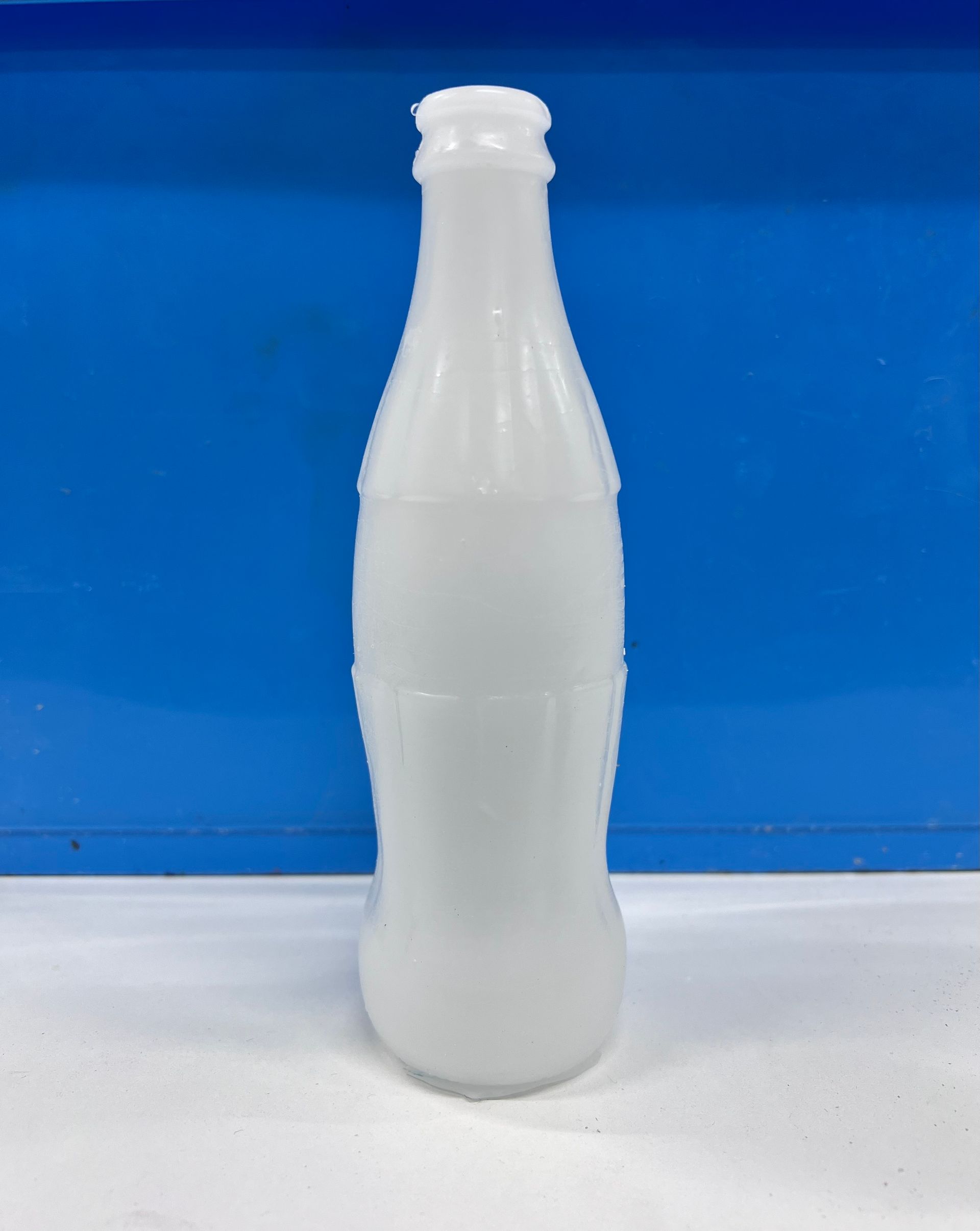
White wax replica of a coca-cola bottle
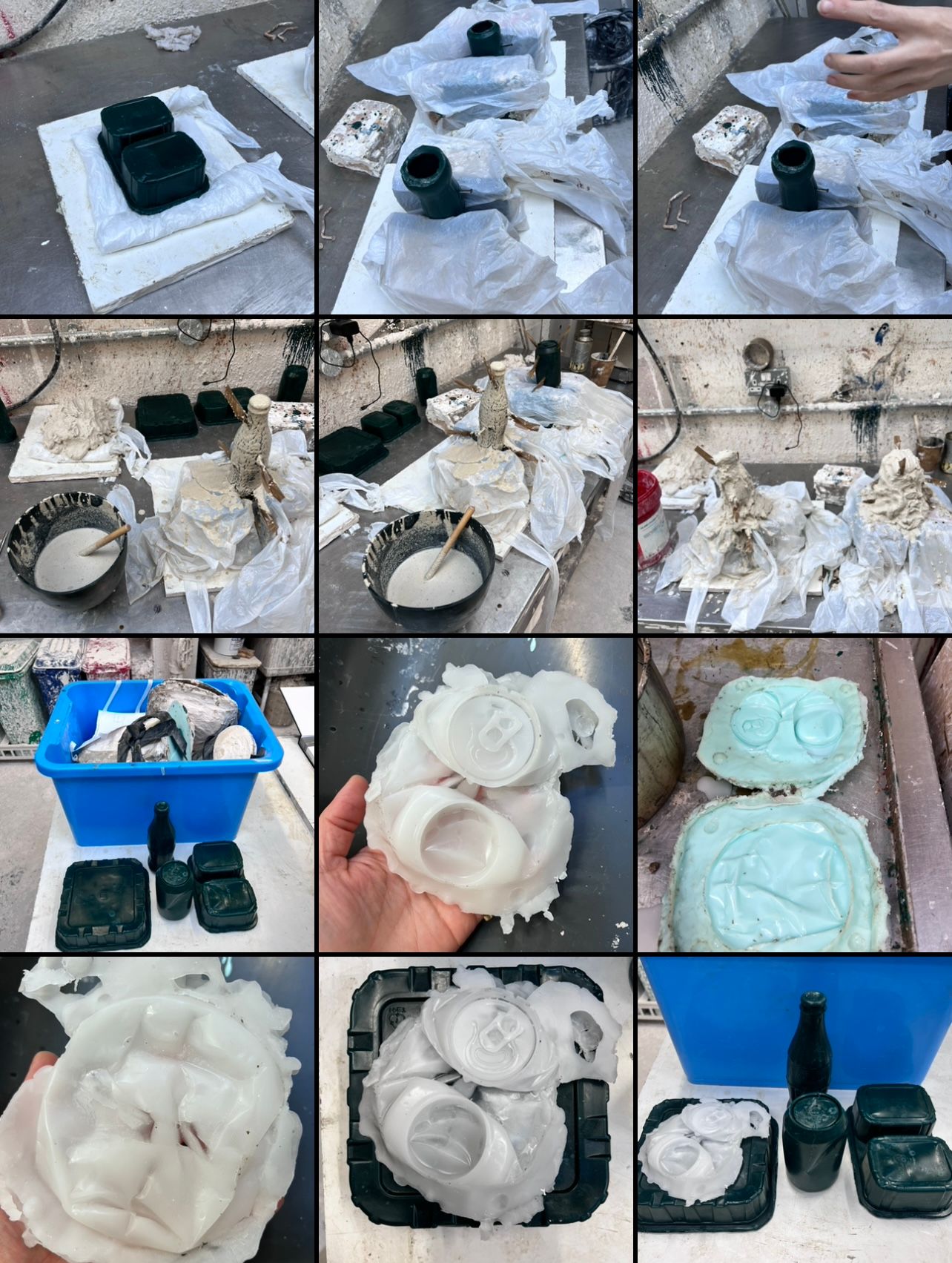
Images of making the wax copies of the found objects
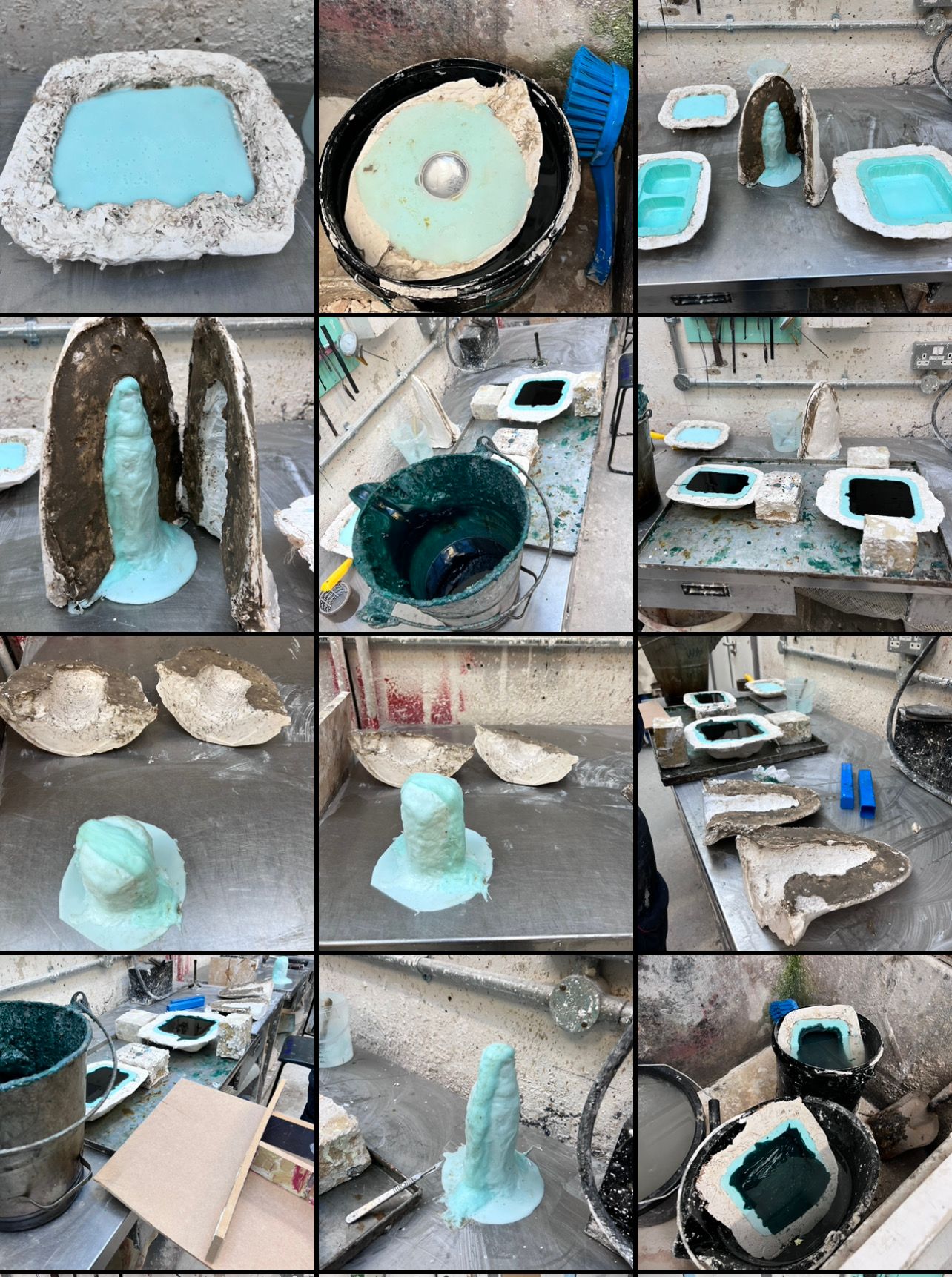
Images of making the wax copies of the found objects
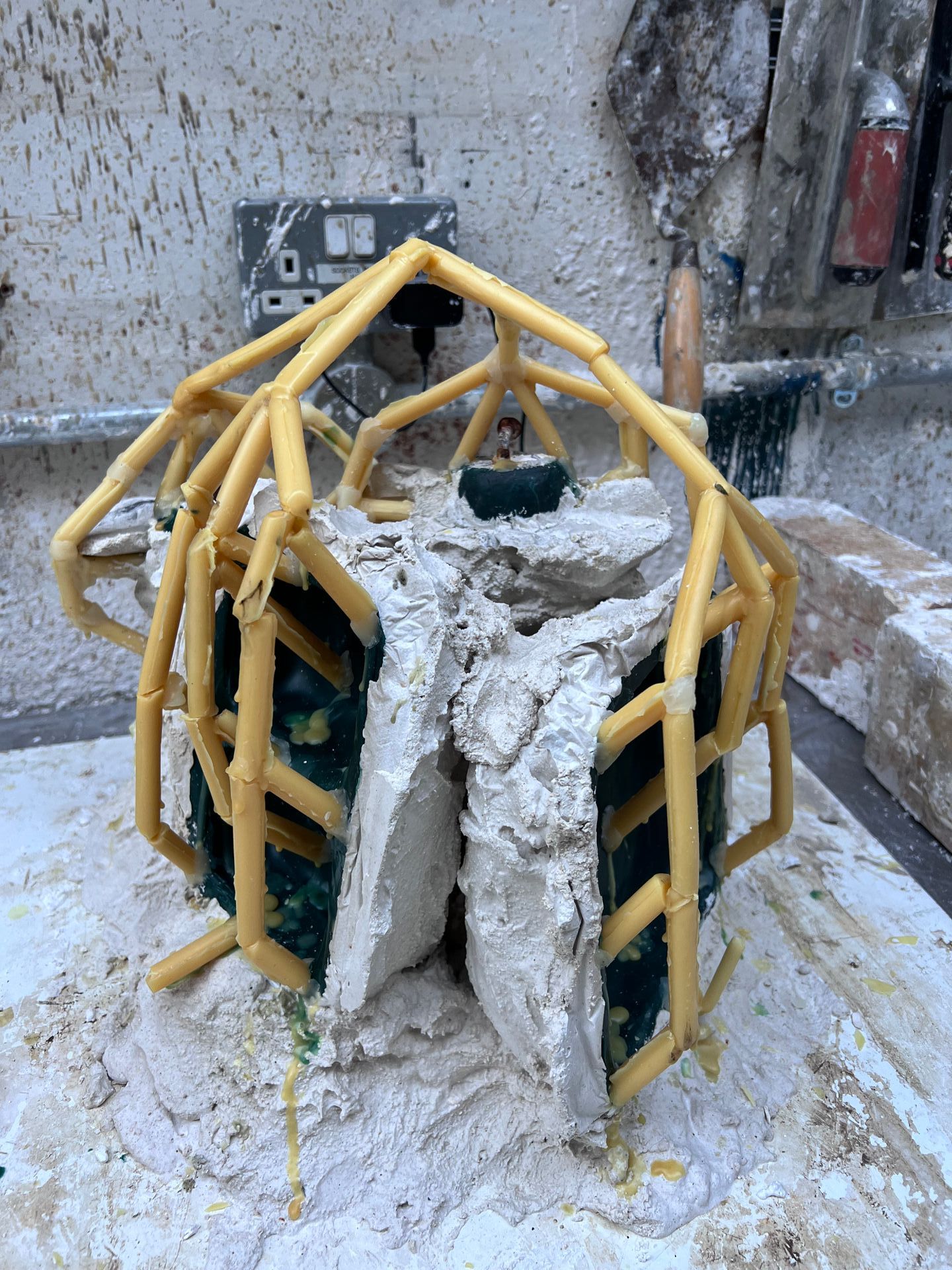
Wax rods to pour bronze
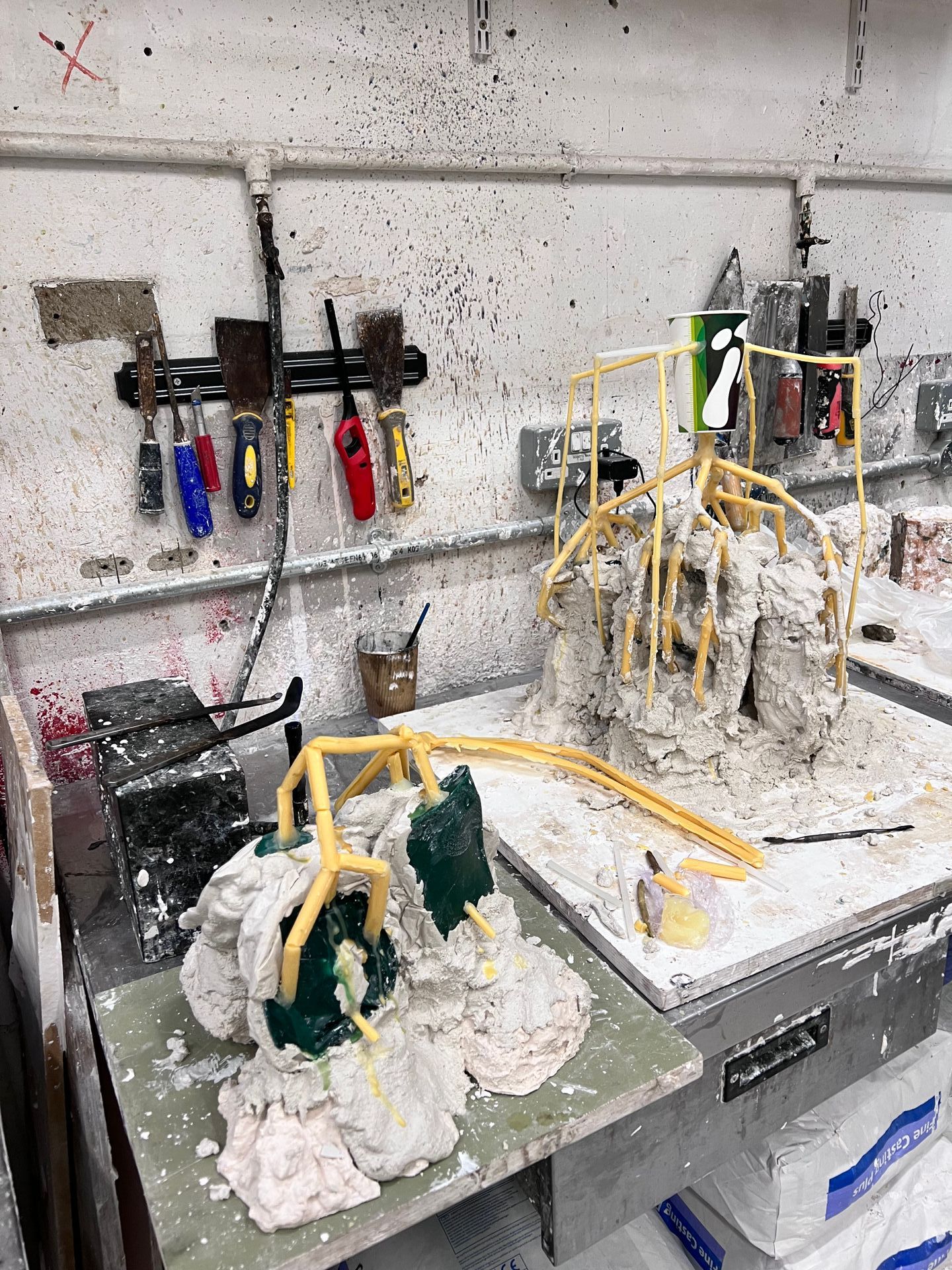
Covering the wax copies of the objects after the wax rods have been attached with a resistant material mix
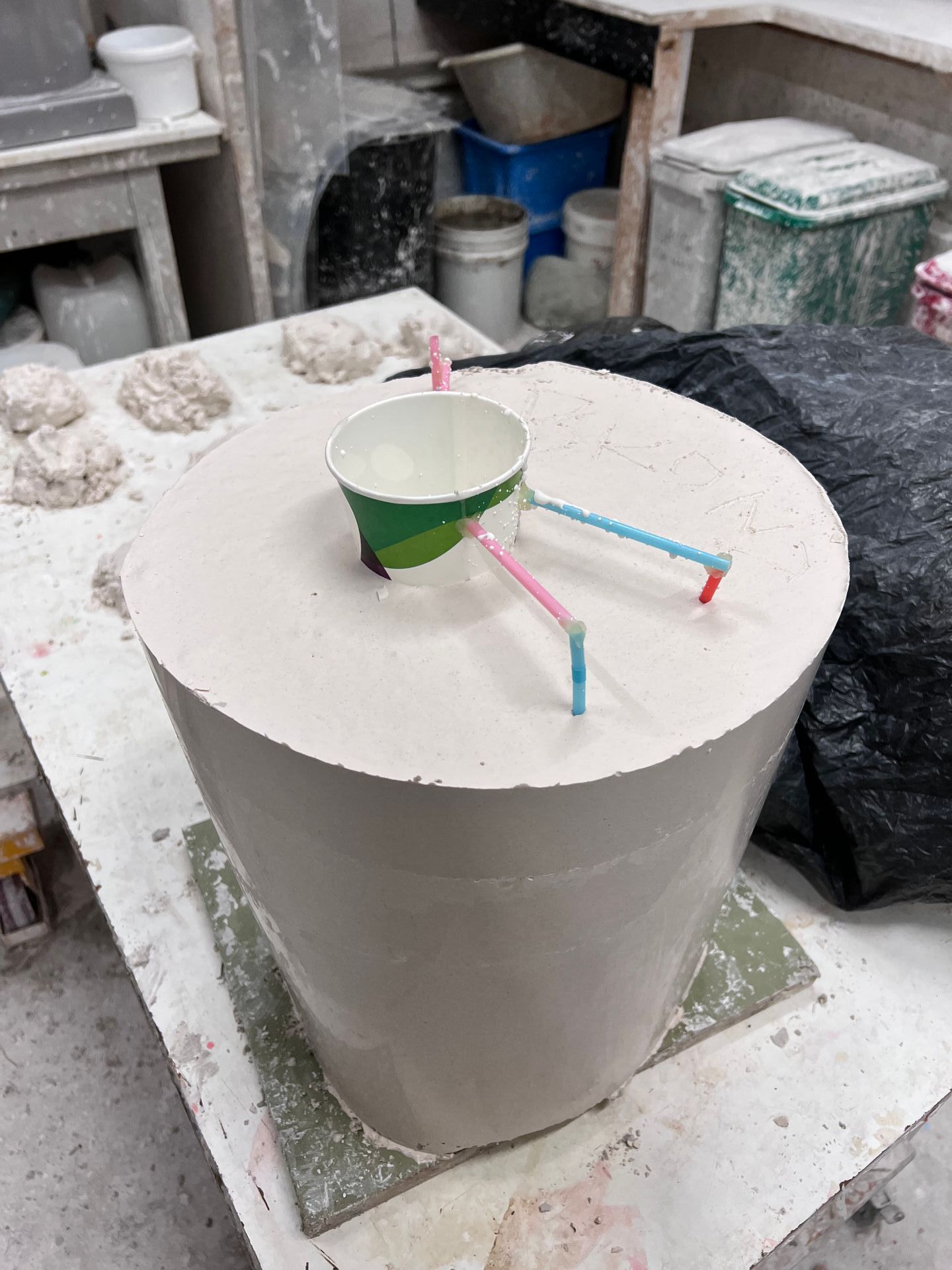
Last stage before the bronze pour
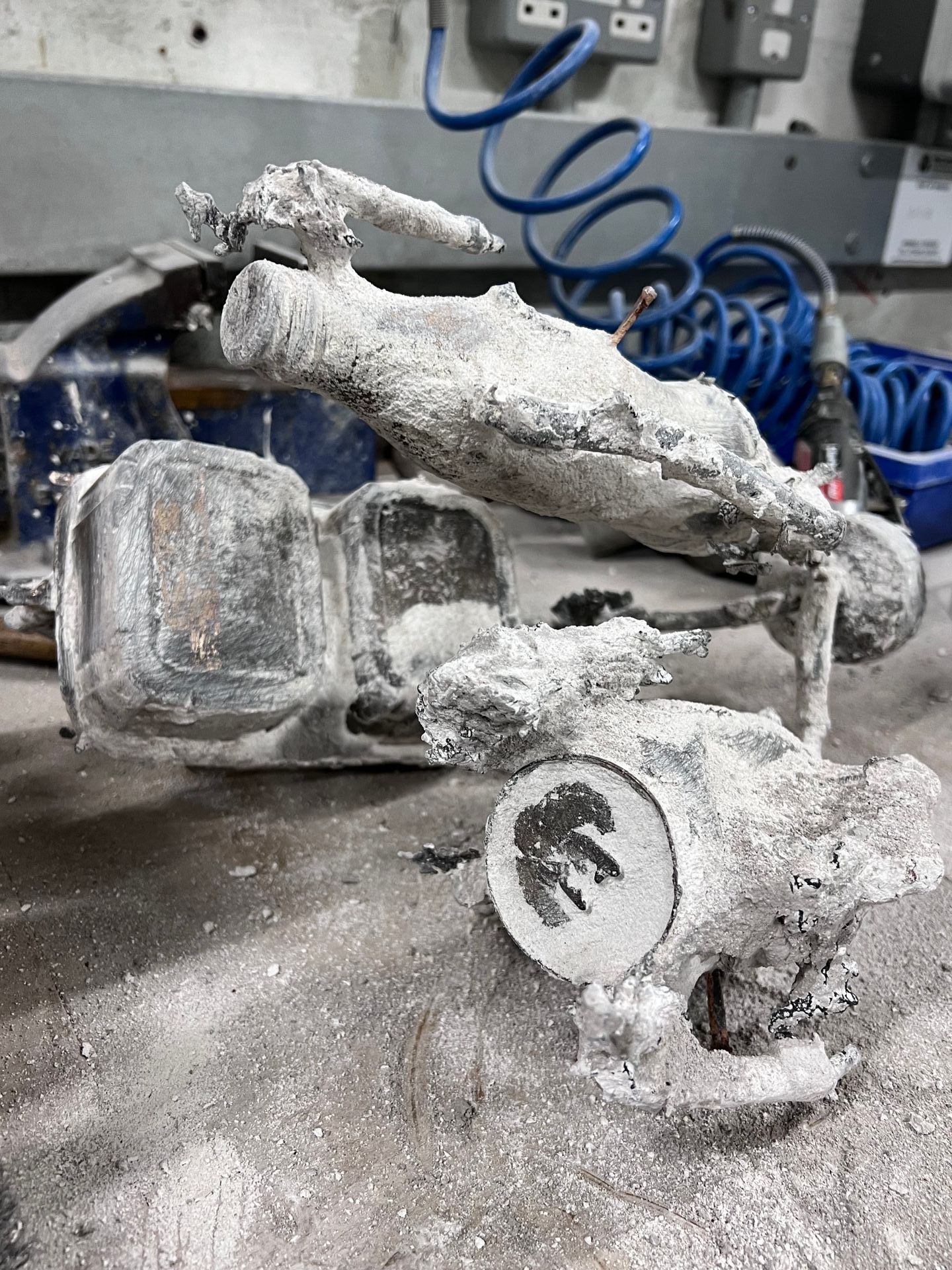
Bronze casts of the found objects in final stages
Bronze is considered a superior material to plastic and aluminium cans for art and is perceived as more valuable for several reasons. First, bronze is a durable, long-lasting material that can withstand the test of time and is resistant to corrosion and weathering. Second, bronze has a unique aesthetic appeal and a rich cultural significance, being a traditional material with a history of centuries of use in art. Third, the creation of bronze sculptures and other artworks requires a high level of skill and craftsmanship, adding to its perceived value. Fourth, bronze artworks are often one-of-a-kind or limited edition, adding to its perceived value. Finally, bronze is considered a good investment and has potential to appreciate in value over time. All these factors combined, make it clear that bronze is perceived as more valuable than plastic in the art world.
I am using the technique of lost wax casting in bronze to give value and significance to a few items that are often perceived as non-valuable, such as a Pepsi can, a Coca-cola bottle, and a plastic food tray.
Ceramics Experiments
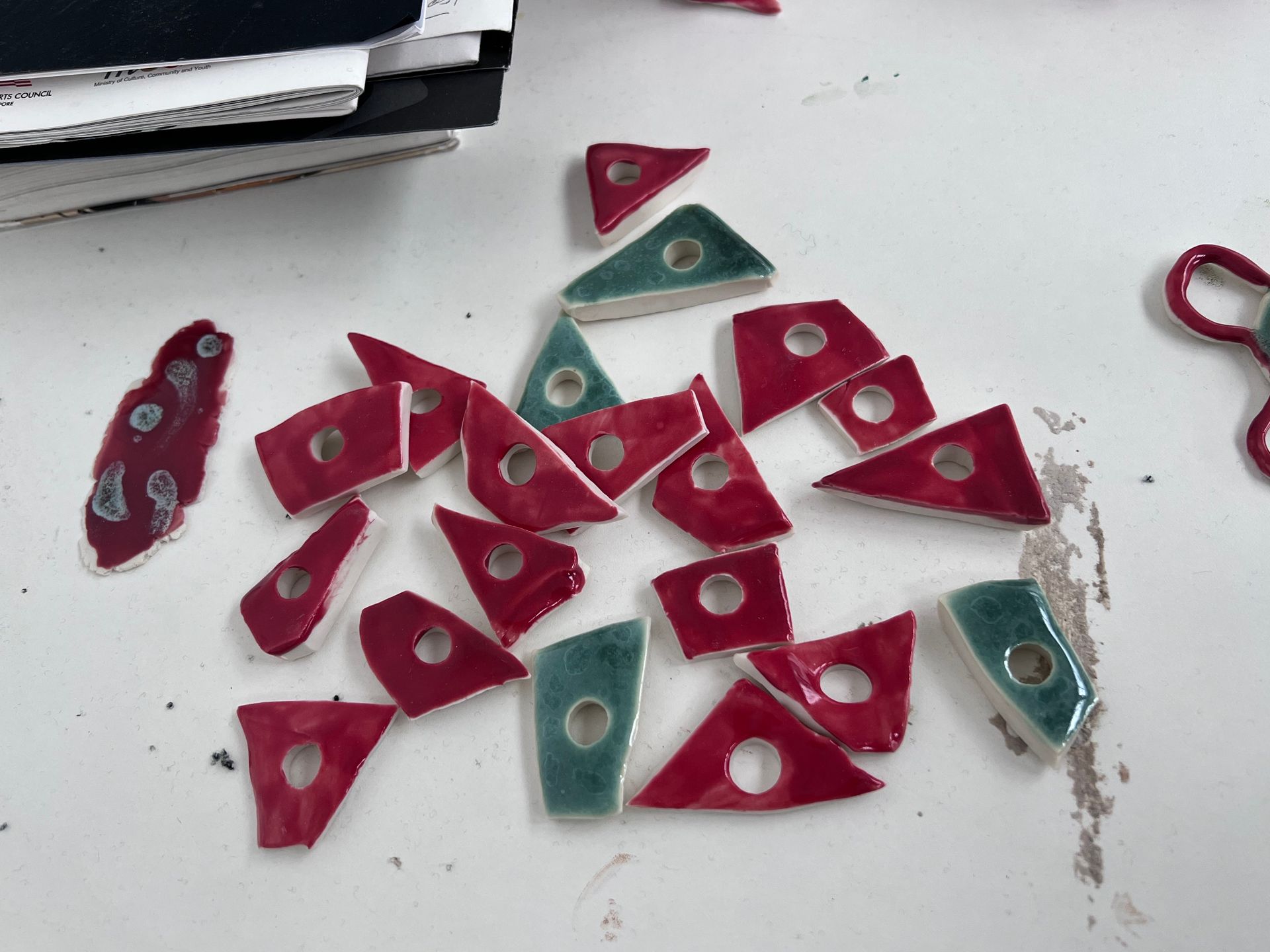
I experimented with porcelain for it unique translucency in the idea that I will re-make my found objects in the same material with the purpose of elevating the ordinary to extraordinary.

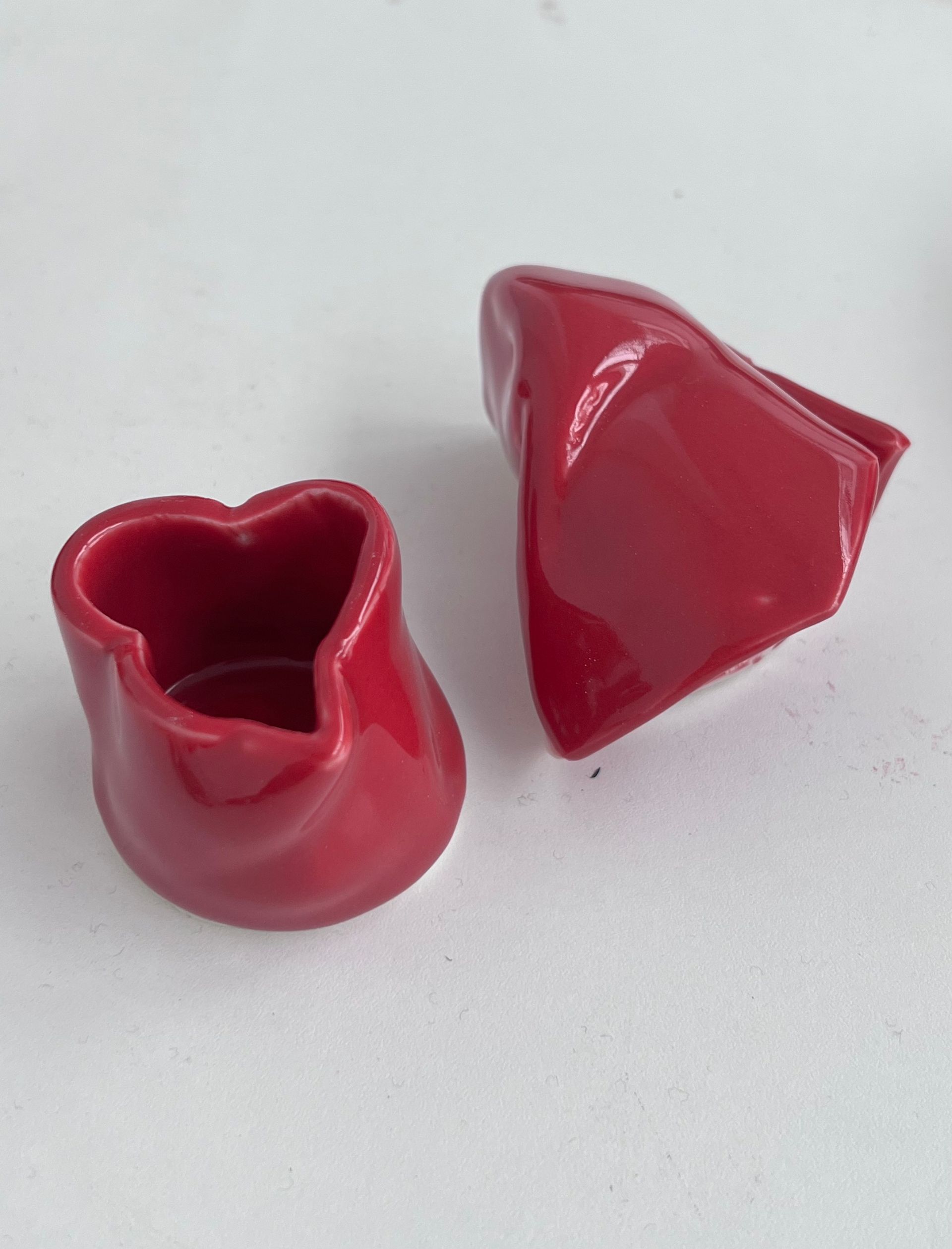
The experiments are in preparation for the duplication of my household objects in porcelain. The objects will be glazed in red to change their intrinsic meaning and in doing so to create a revaluation of those objects.
My art practice centres on exploring social activism and ecology. Specifically, my recent work aims to change people's perceptions and relationship with disposable objects, with the goal of ultimately changing their behaviour and positively impacting the environment.
